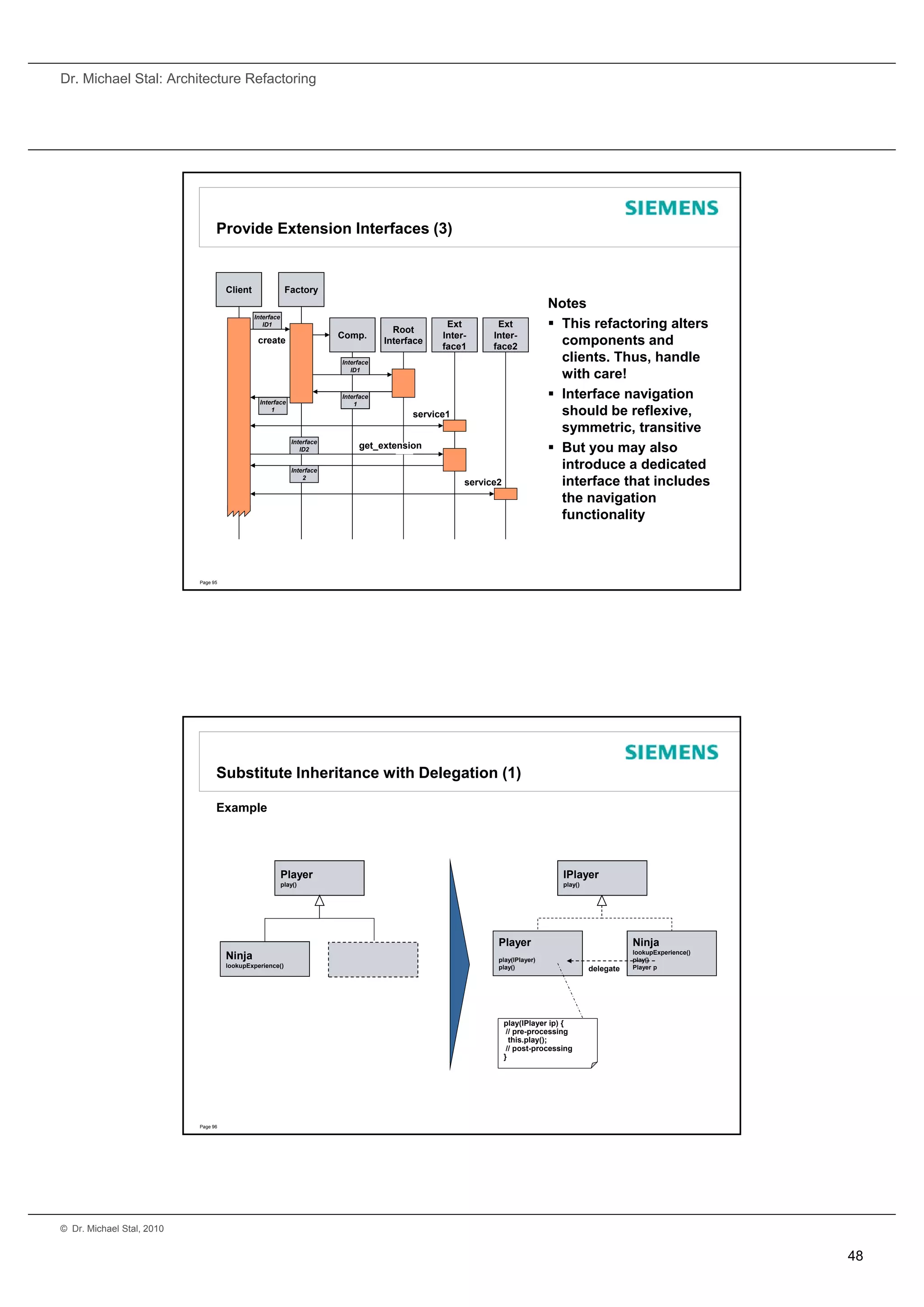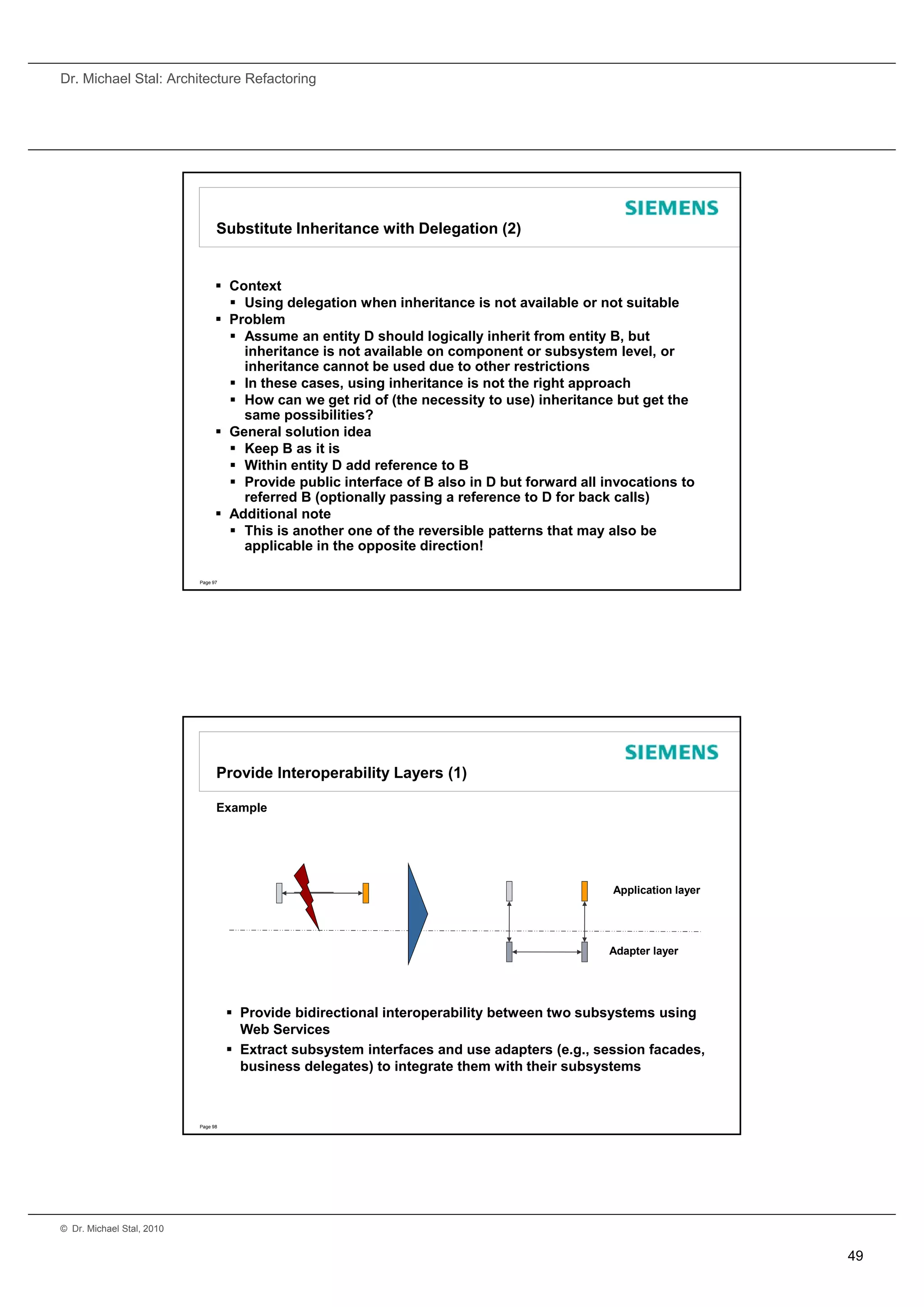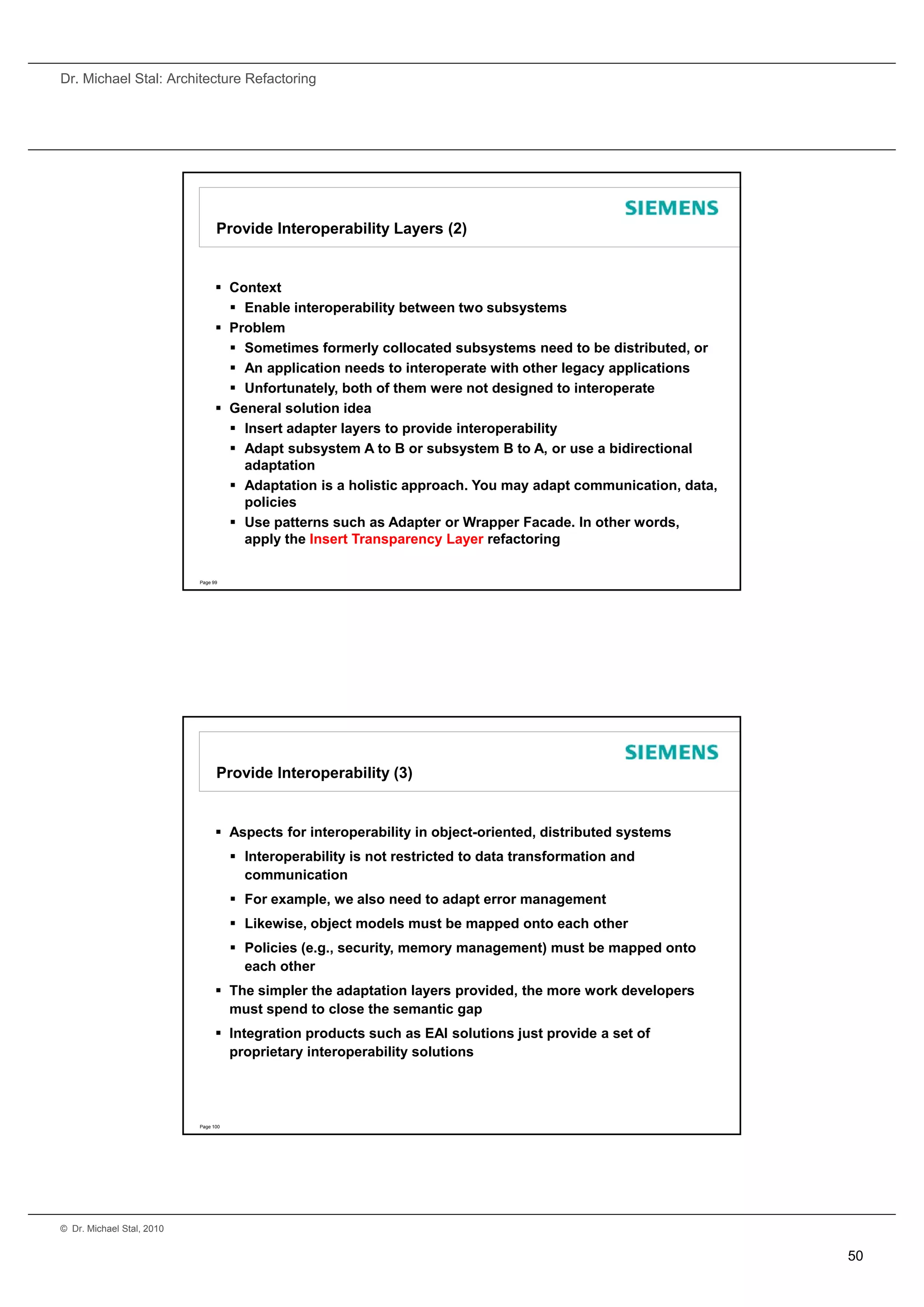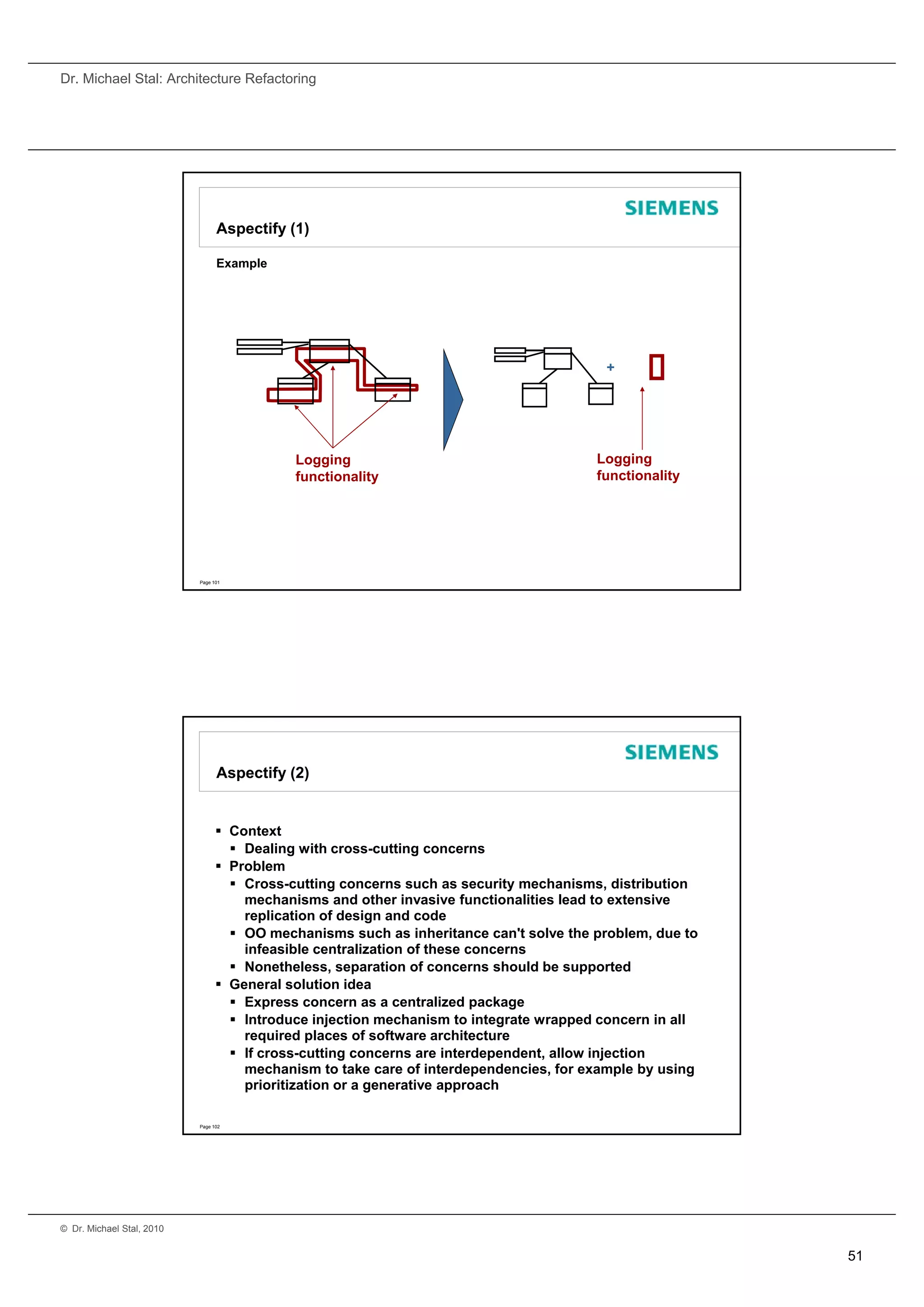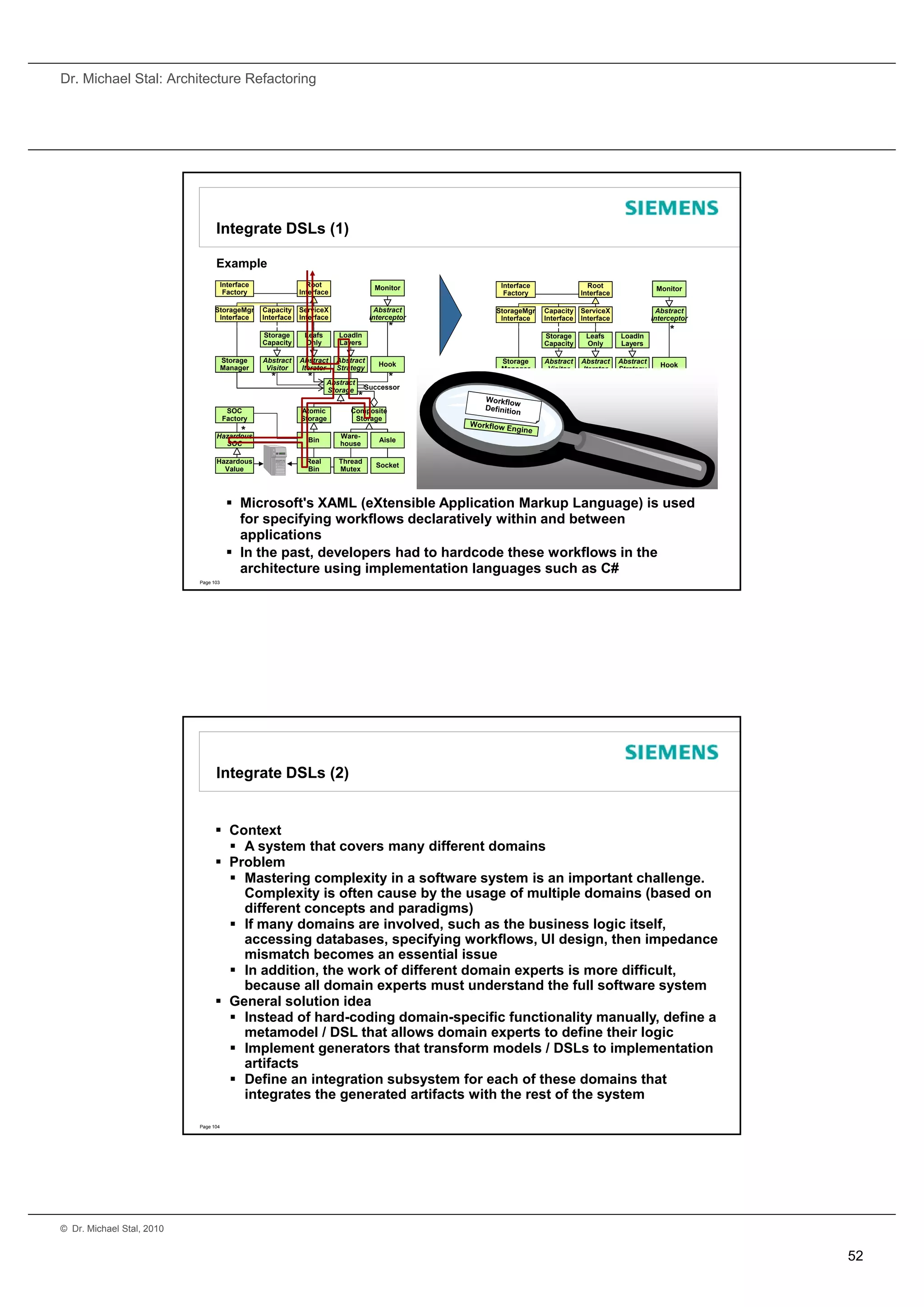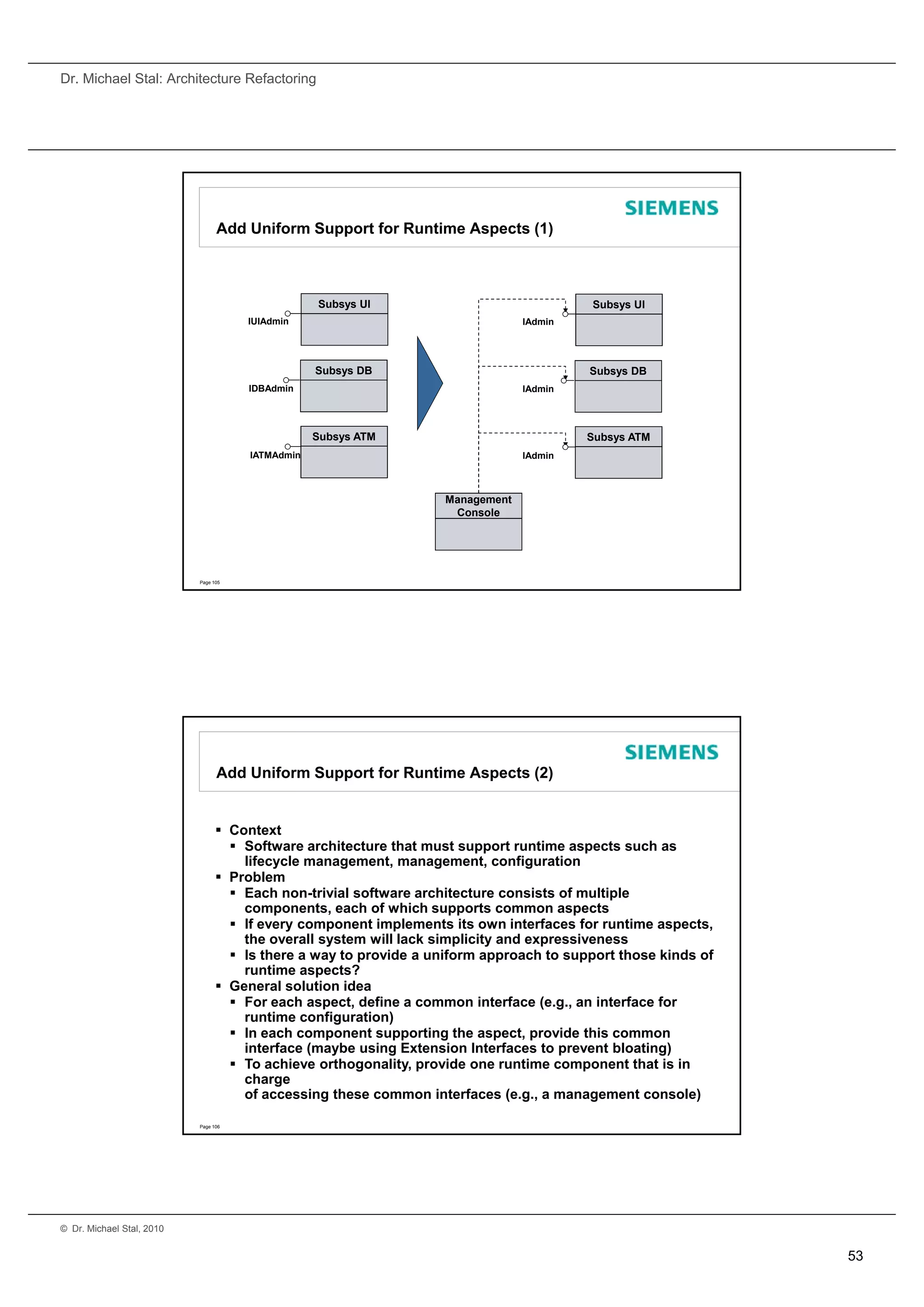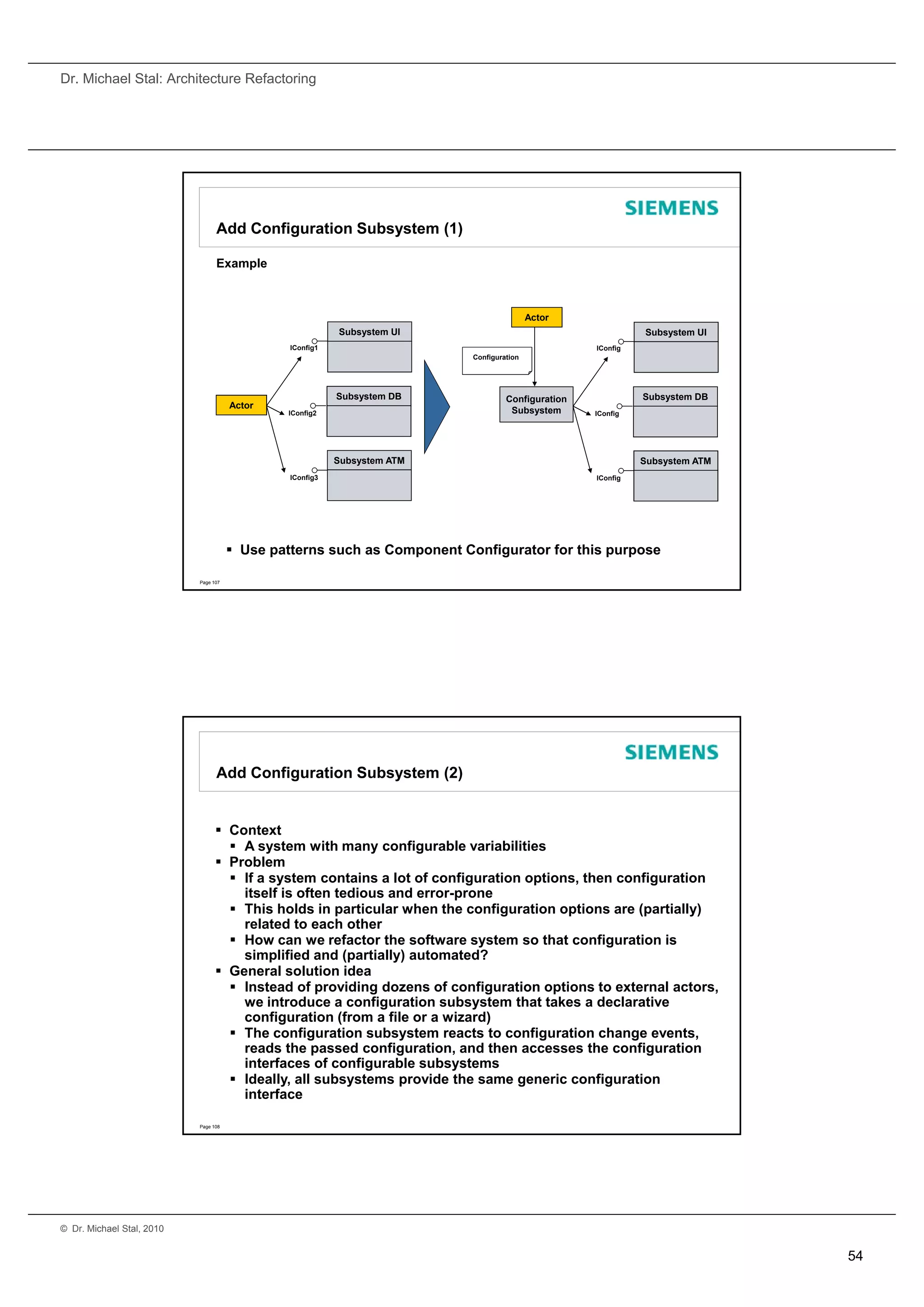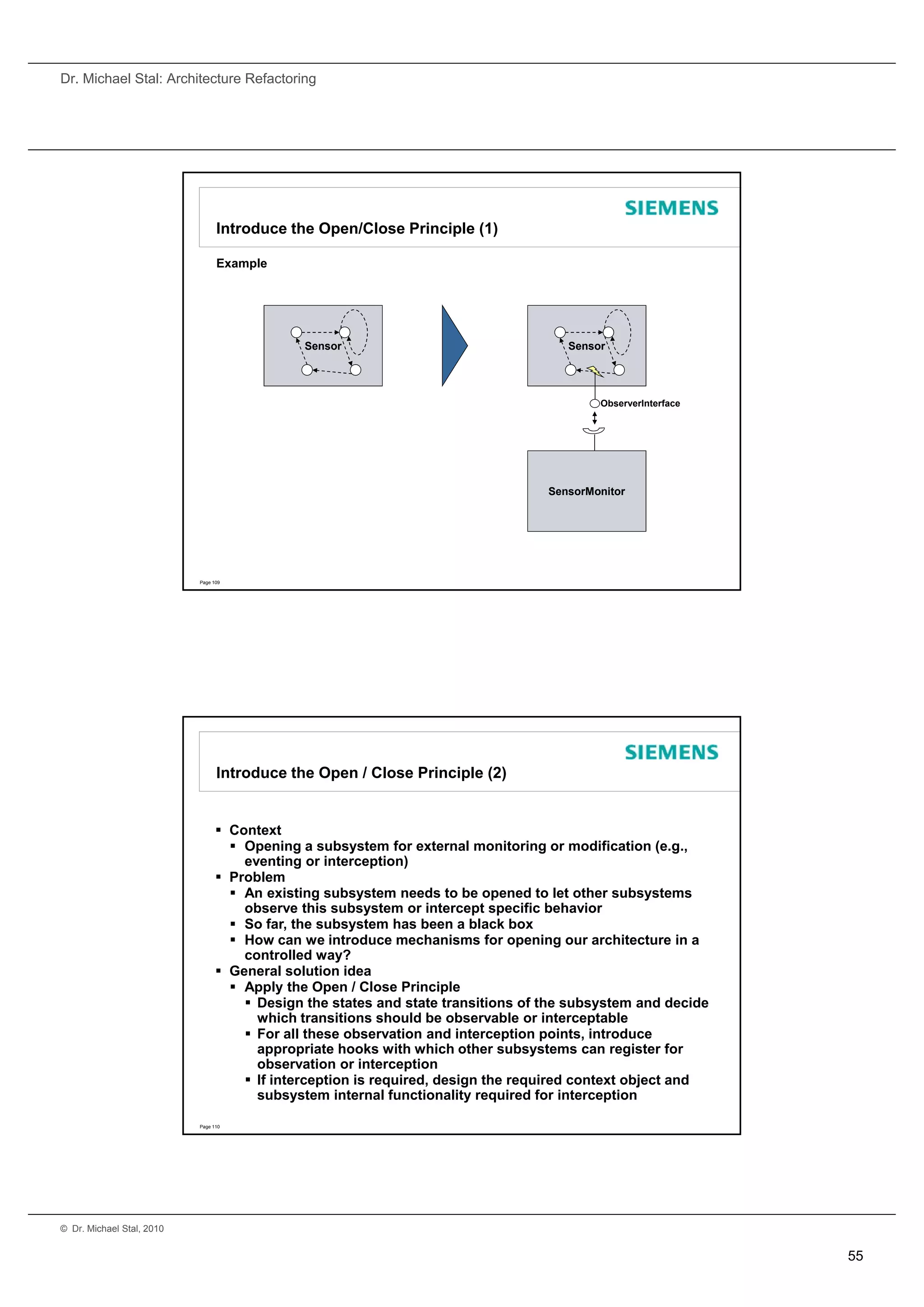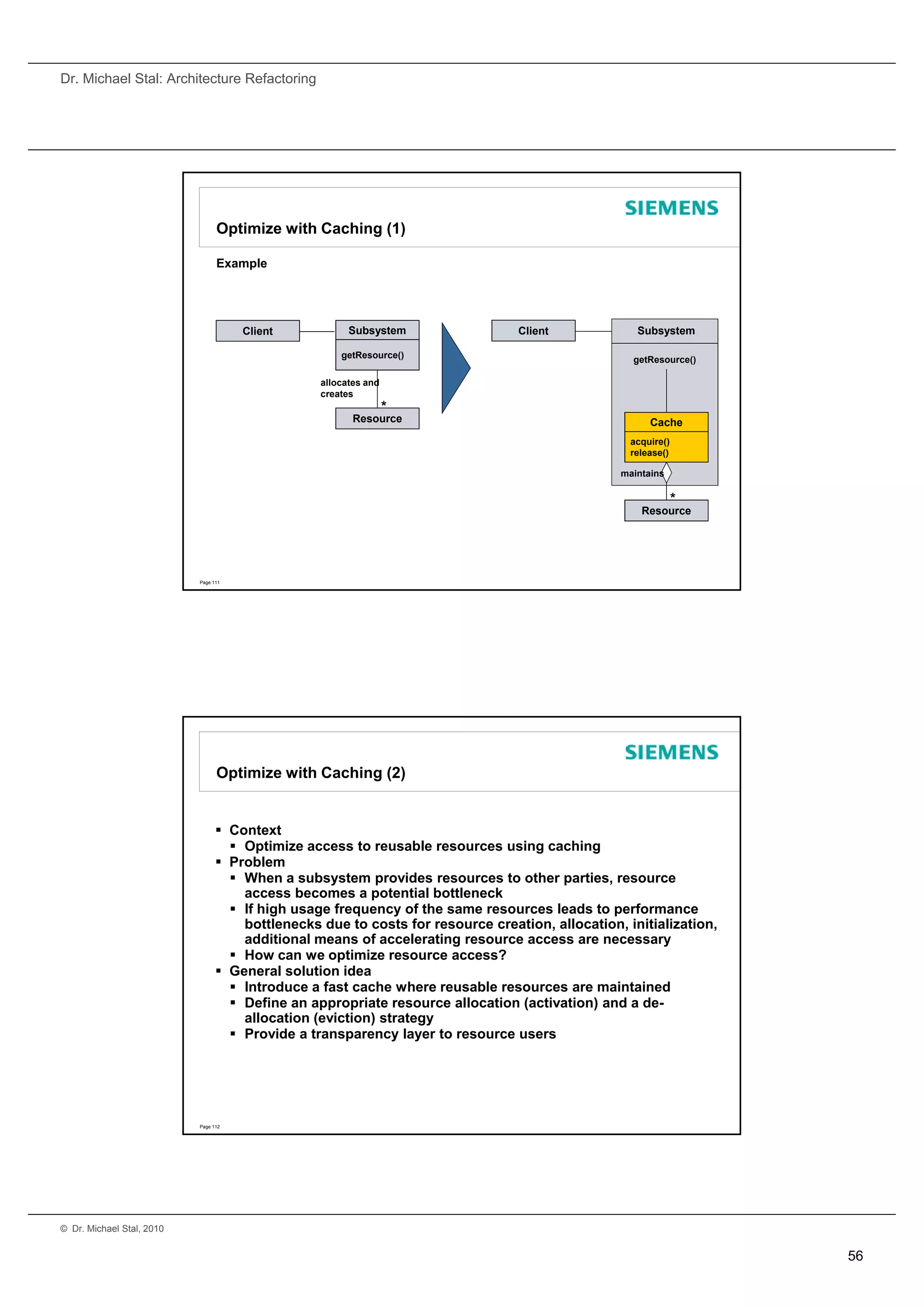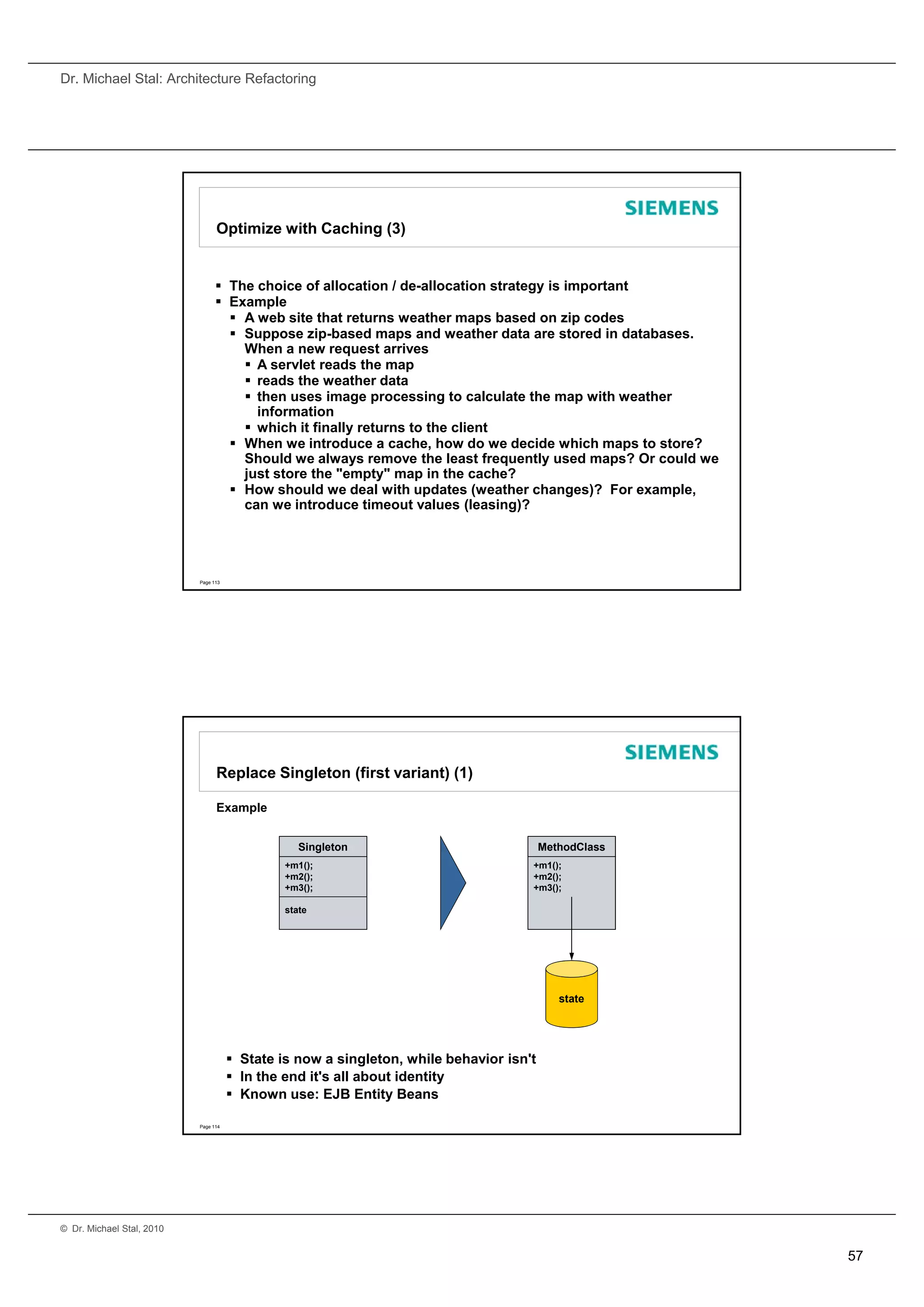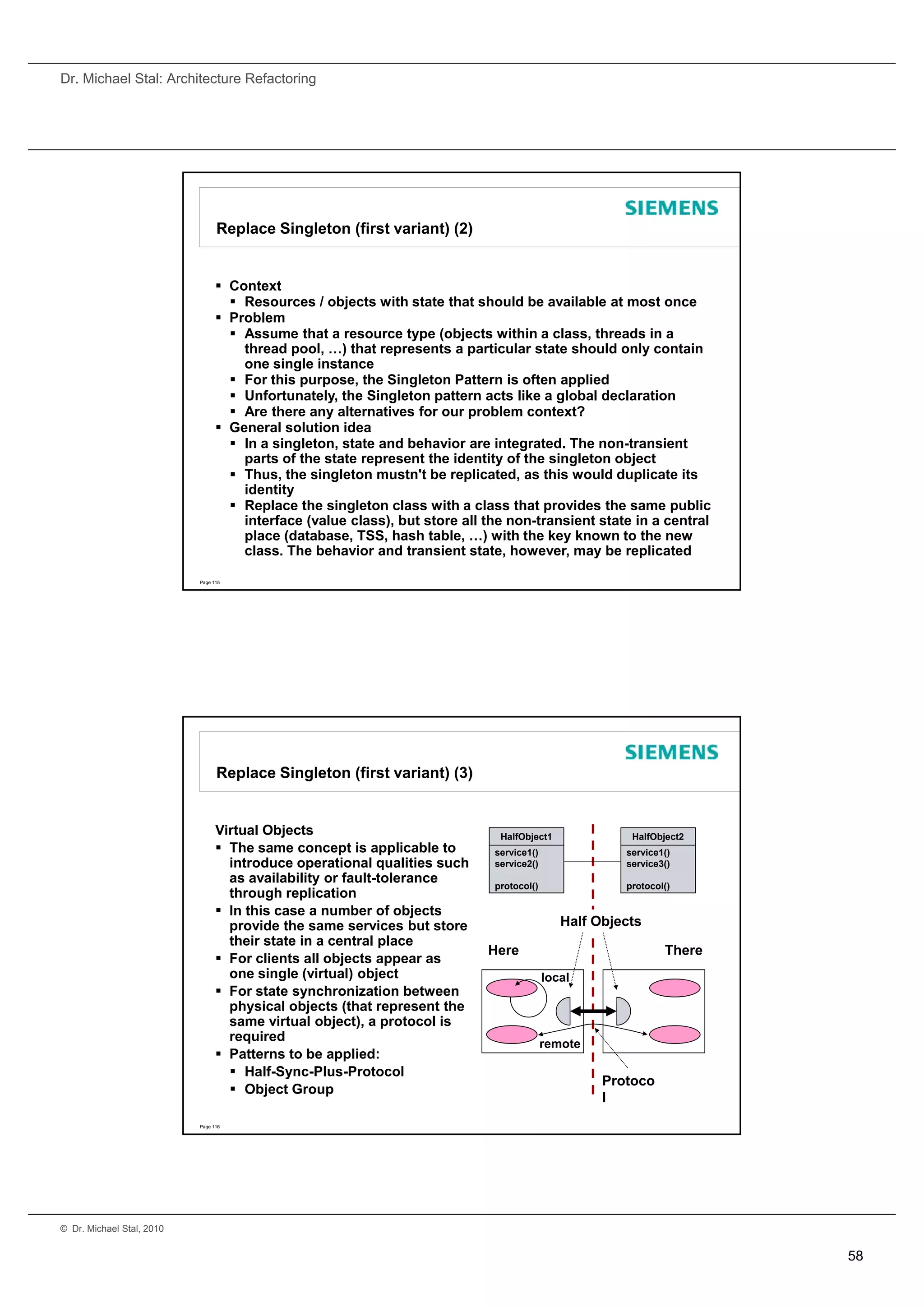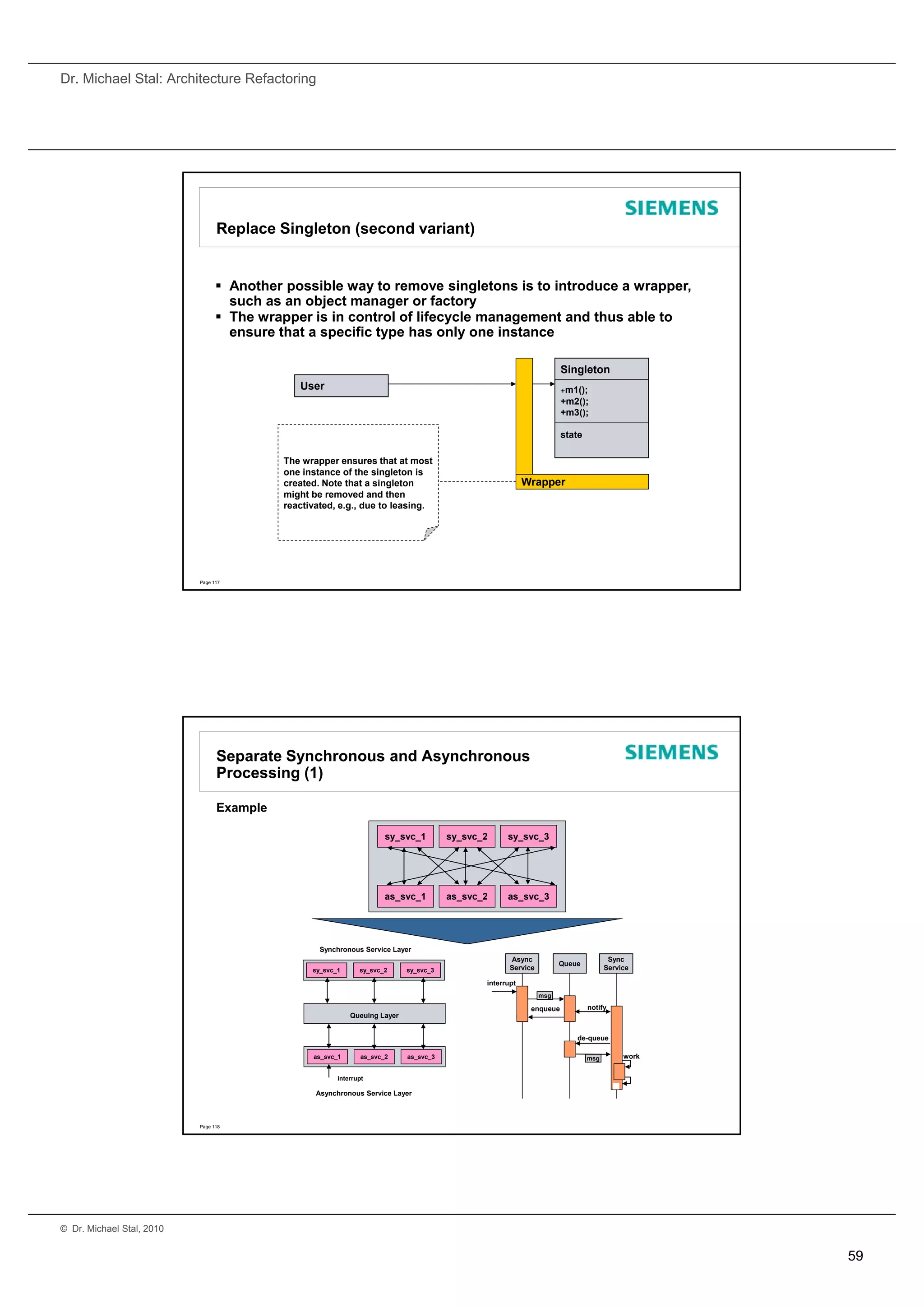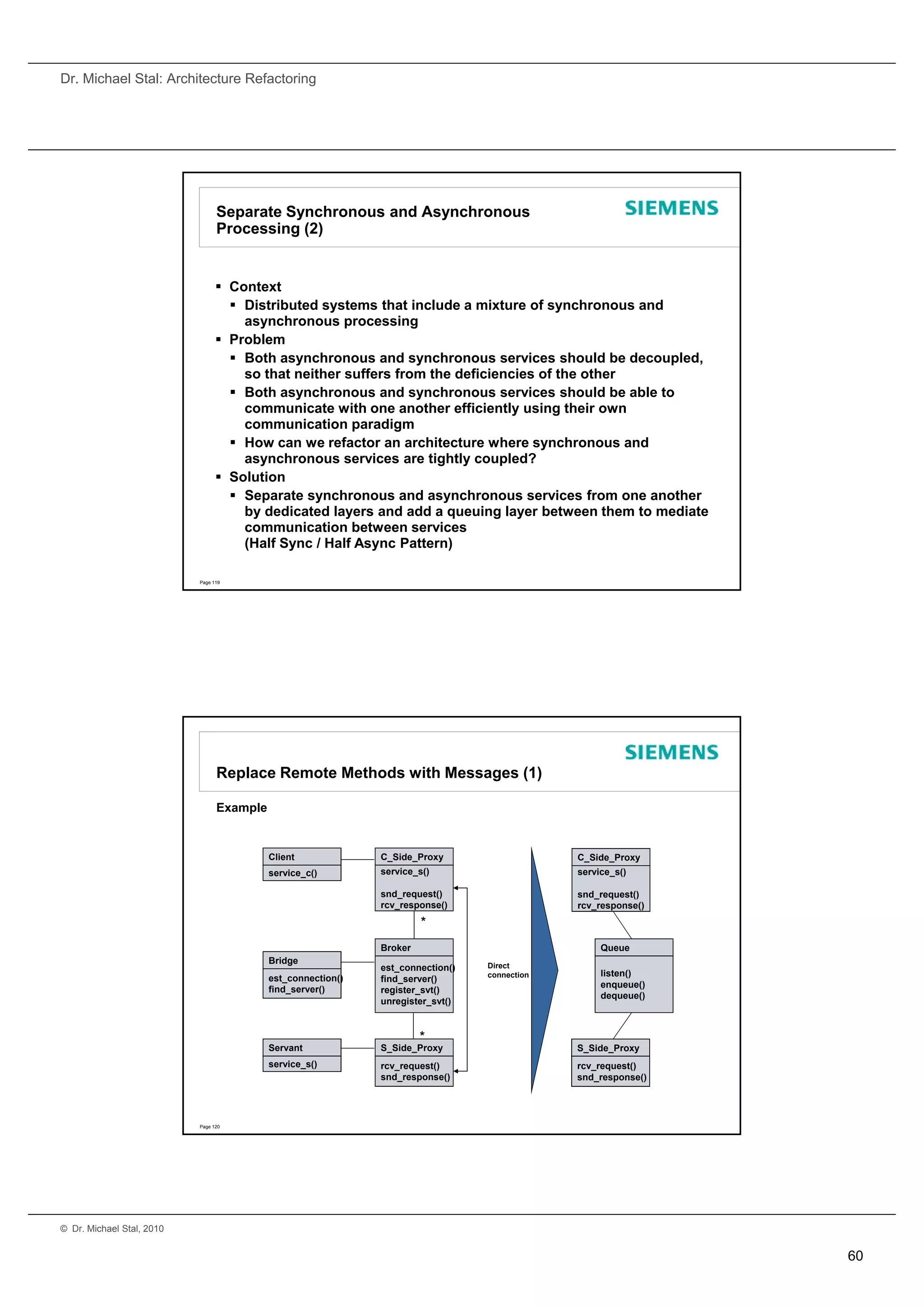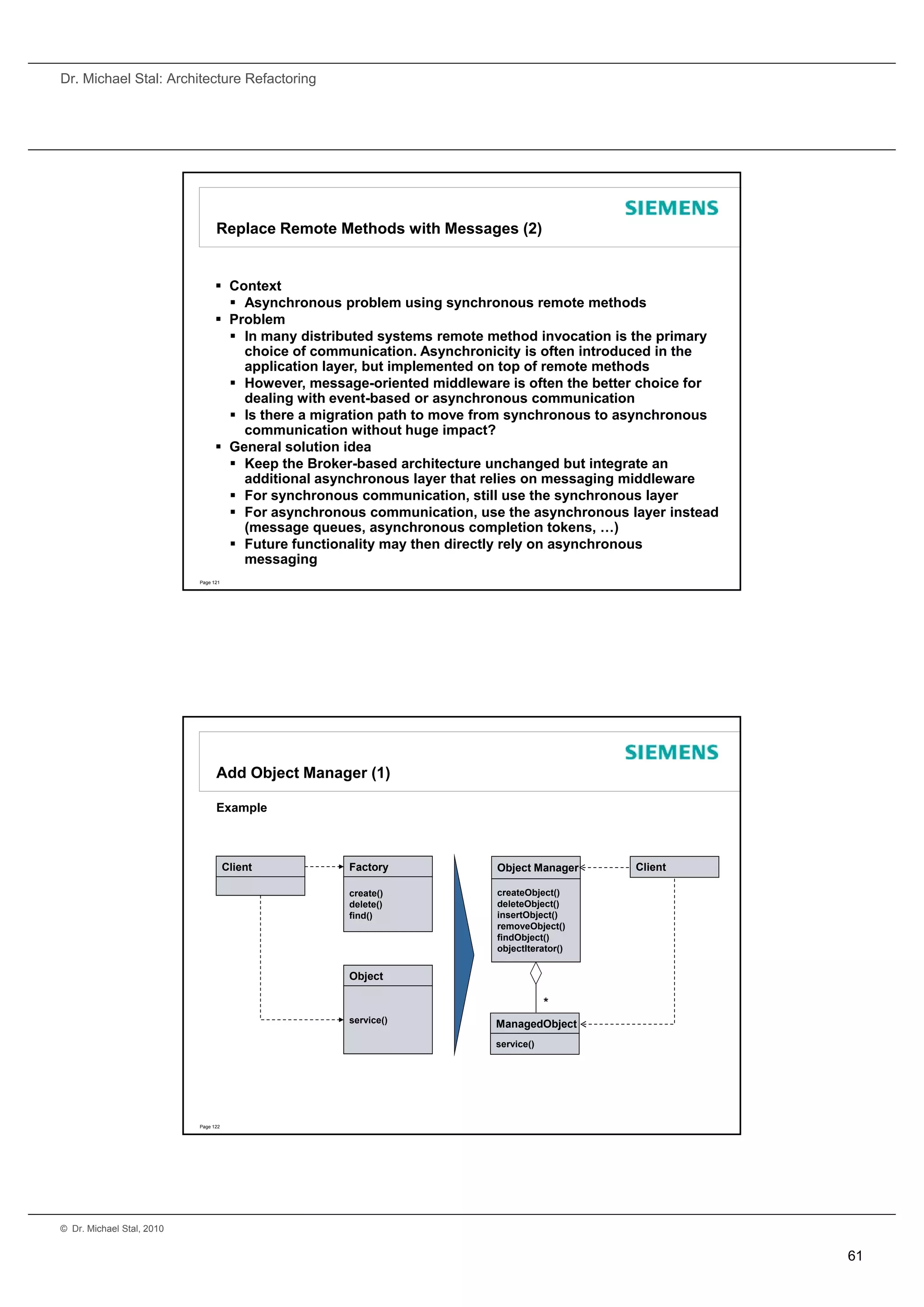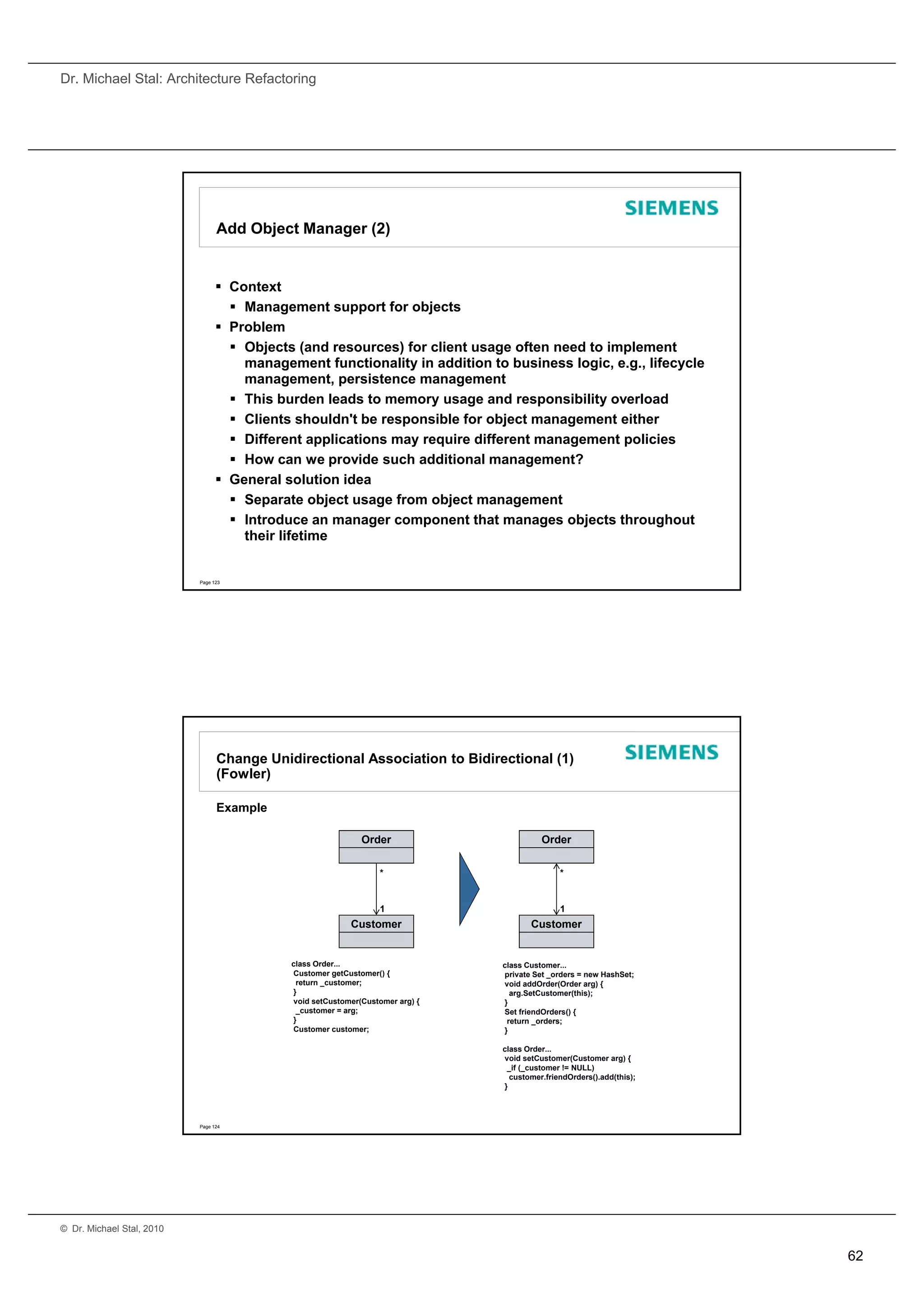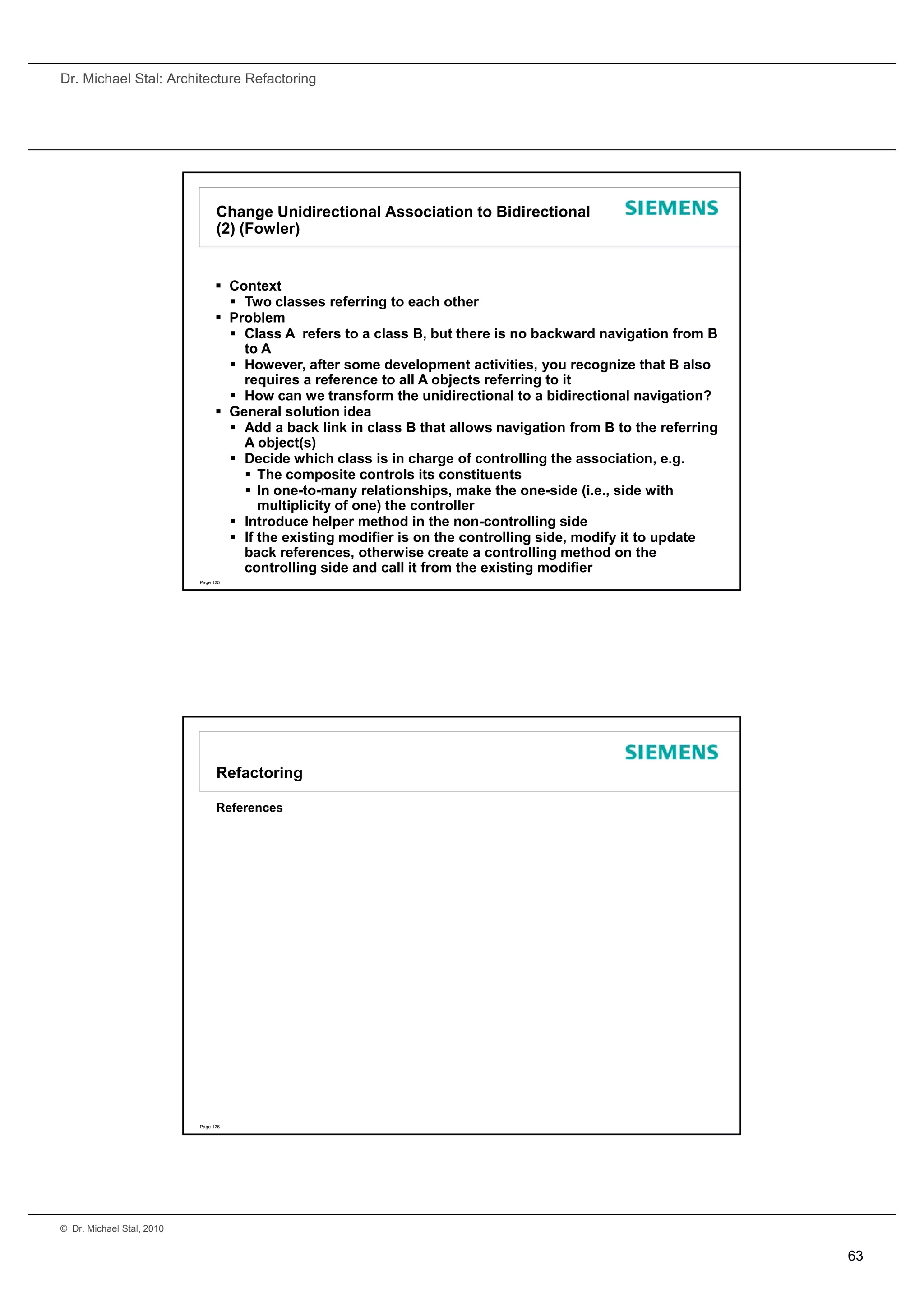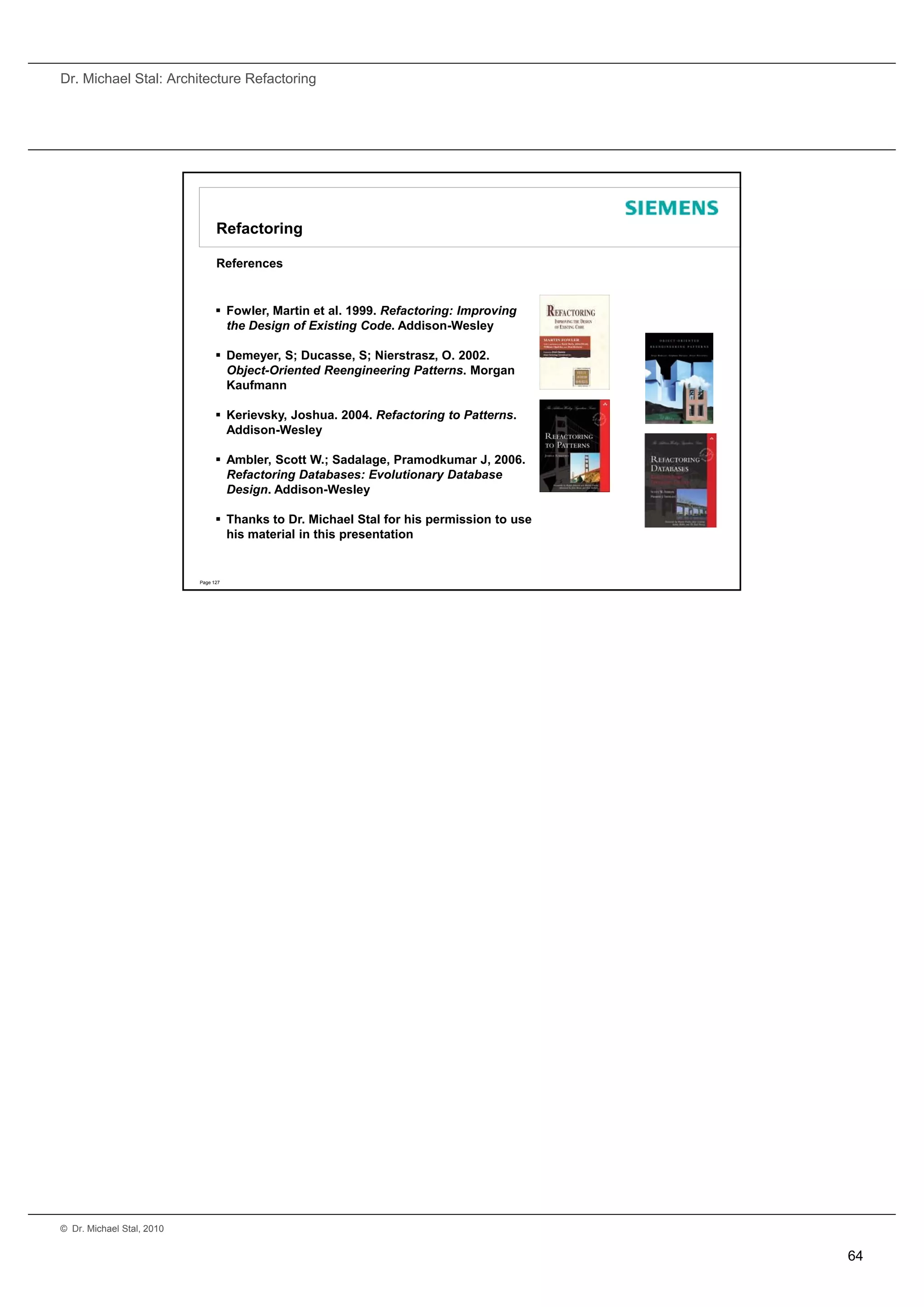The document discusses architecture refactoring and defines it as changing a software system or process in a way that does not alter external behavior but improves internal structure. It notes that design erosion over time negatively impacts systems and refactoring can help address this. The document outlines some motivations for refactoring like improving structural and non-functional qualities to achieve a more economical, visible, and symmetric design. It also distinguishes refactoring from reengineering and rewriting.
![Dr. Michael Stal: Architecture Refactoring
Architecture Refactoring –
Motivation, Approach and Patterns
accu 2010
Dr. Michael Stal
Panta rhei
There is nothing permanent except
change
[Heraclitus, 535–475 BC]
Page 2
© Dr. Michael Stal, 2010
1](https://image.slidesharecdn.com/accu2010archrefactoring-100429173655-phpapp01/75/Accu2010-archrefactoring-1-2048.jpg)
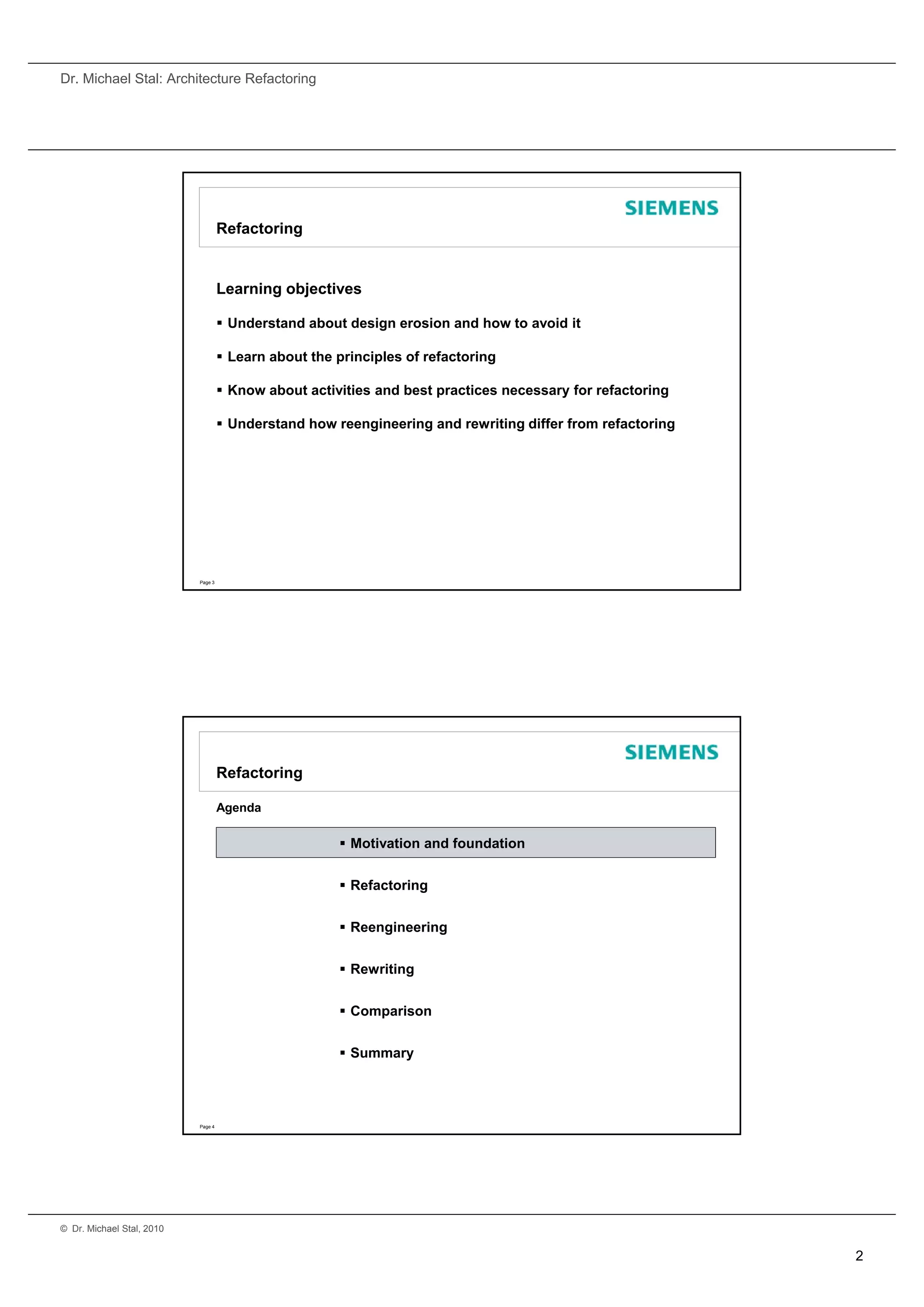
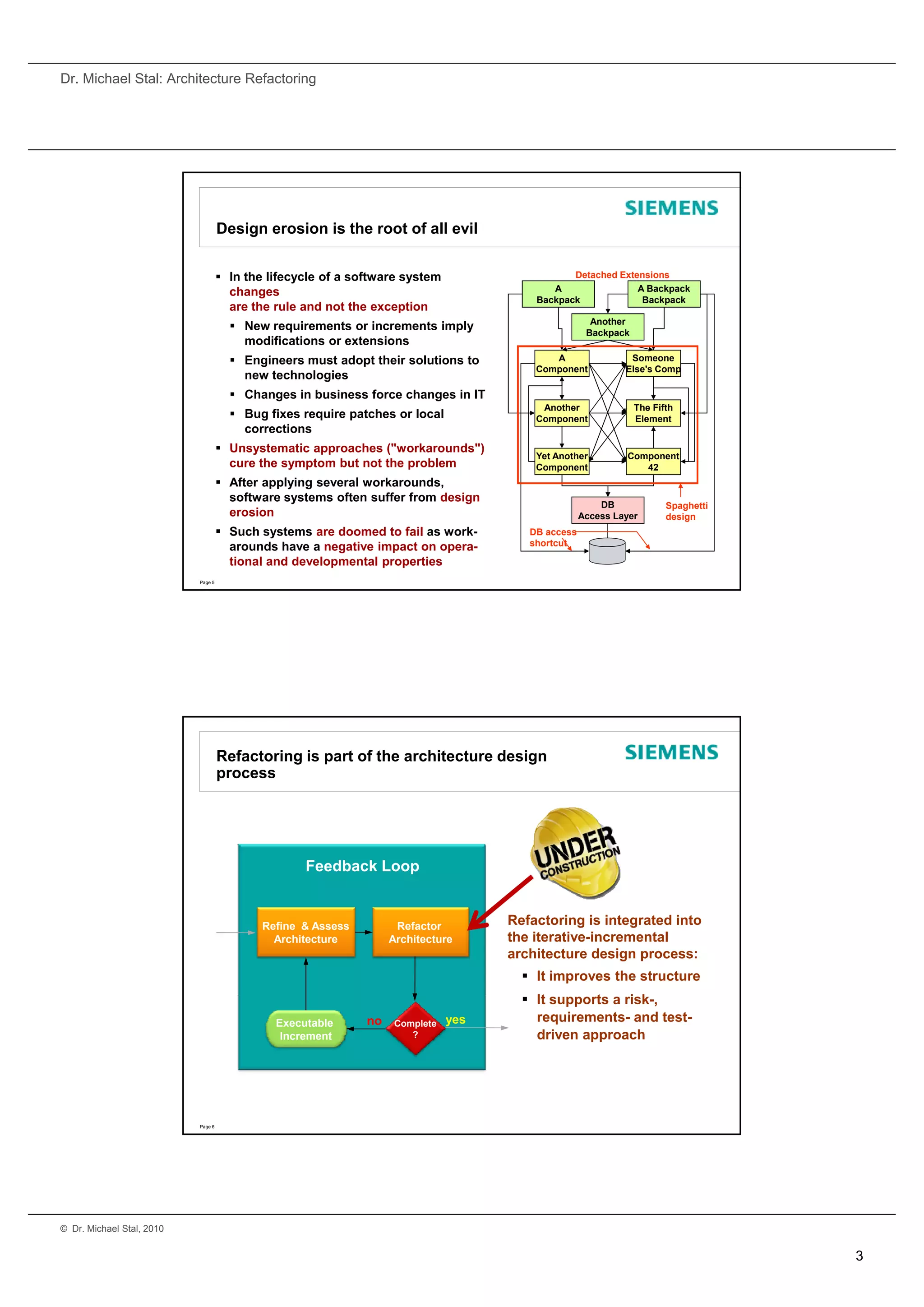
![Dr. Michael Stal: Architecture Refactoring
Yes, but was is it?
"Code refactoring is the process
of changing a software system
g g y Note: external interfaces
remain unchanged!
i h d!
in such a way that it does not
alter the external behavior of
the code yet improves its
internal structure" [Martin Fowler]
Put more generally: Refactoring
is the process of changing a
software system or process in
such a way that it does not alter
the external behavior, yet
improves its internal structure
Page 7
Why should we refactor?
Architecture refactoring needs to
achieve quality improvement in
terms of
structural as well as
non-functional qualities
Structural quality indicators
include:
Economy
Visibility
Spacing
Symmetry
Emergence
Consequently, the goal of
architecture refactoring is to
achieve or improve such qualities
Page 8
© Dr. Michael Stal, 2010
4](https://image.slidesharecdn.com/accu2010archrefactoring-100429173655-phpapp01/75/Accu2010-archrefactoring-4-2048.jpg)
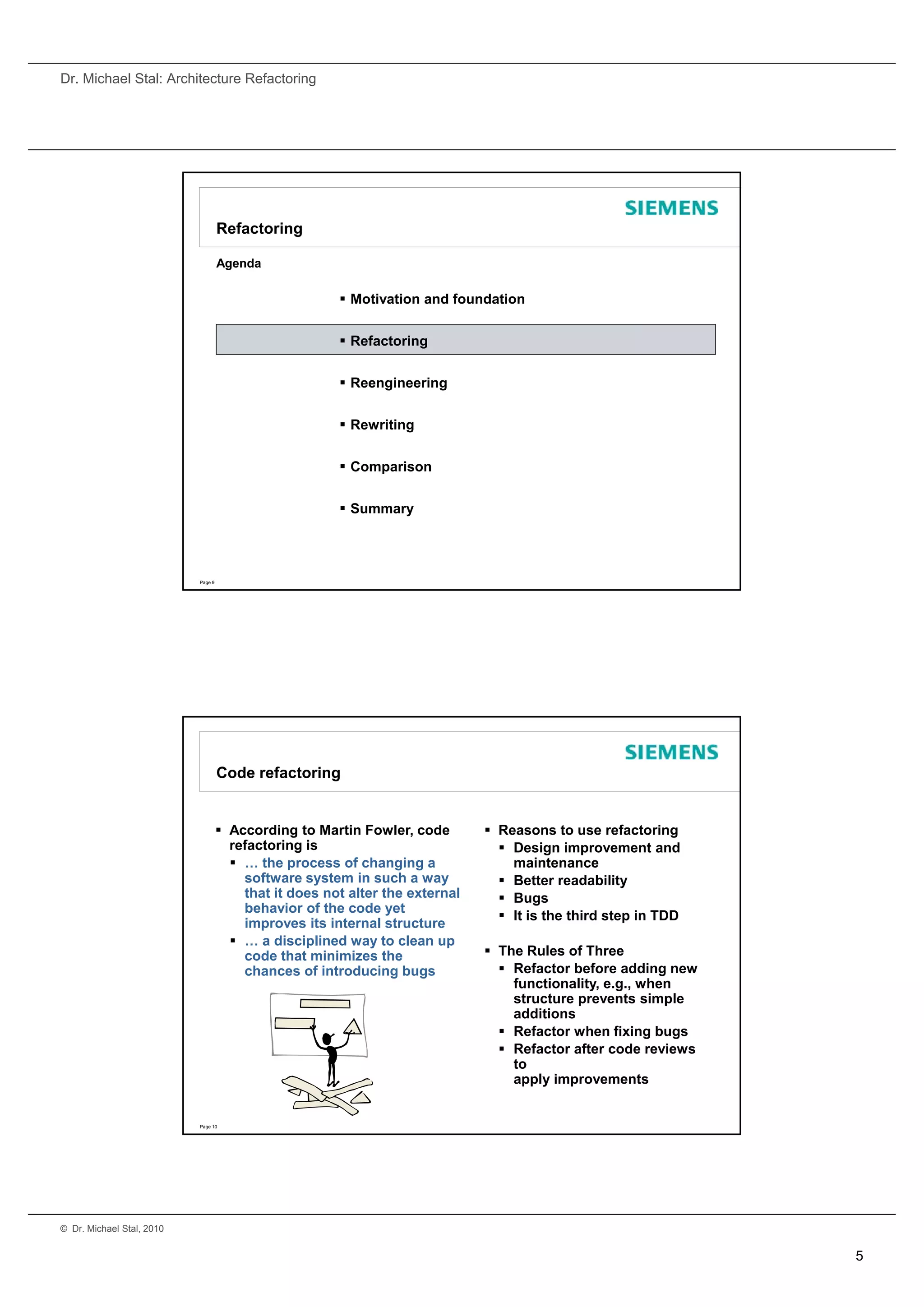
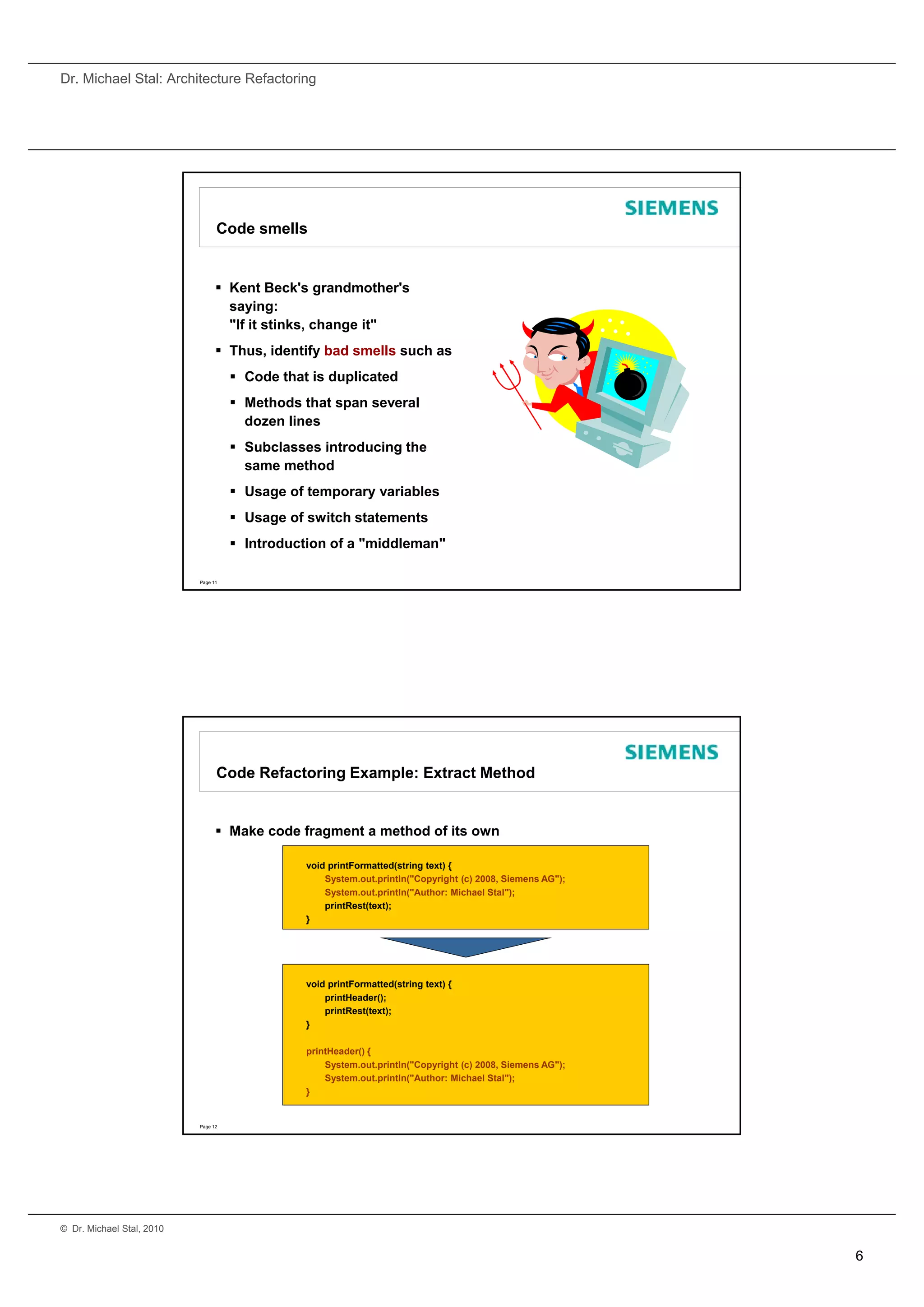
![Dr. Michael Stal: Architecture Refactoring
Refactoring to patterns
Refactoring to patterns was
introduced by Joshua Kerievsky
y y
General idea: Patterns might give
guidance how to refactor on the
architectural level
Replace your proprietary
solution with a pattern that
solves the same problem Kerievsky's book focuses
on design patterns
Introduce symmetry by making
However, we could also
sure the same problem is
apply the same principle
always solved using the same to architecture patterns
pattern / solution
In the latter case, we'll obtain
This represents a precursor of architecture refactorings
software architecture refactoring
Page 13
Replace hard-coded notifications with Observer
[Joshua Kerievsky]
Do it yourself Observer Pattern
Subject EventSink Subject * Observer
*
update state update
state
observerList doSomething observerList
attach Dynamic
notify detach Wiring ConcreteObserver
setData notify
getData setData update
getData doSomething
state = X;
Subject notify();
contains
hardwired list s->getData()
of interested for all observers
in observerList do
components update();
Page 14
© Dr. Michael Stal, 2010
7](https://image.slidesharecdn.com/accu2010archrefactoring-100429173655-phpapp01/75/Accu2010-archrefactoring-7-2048.jpg)
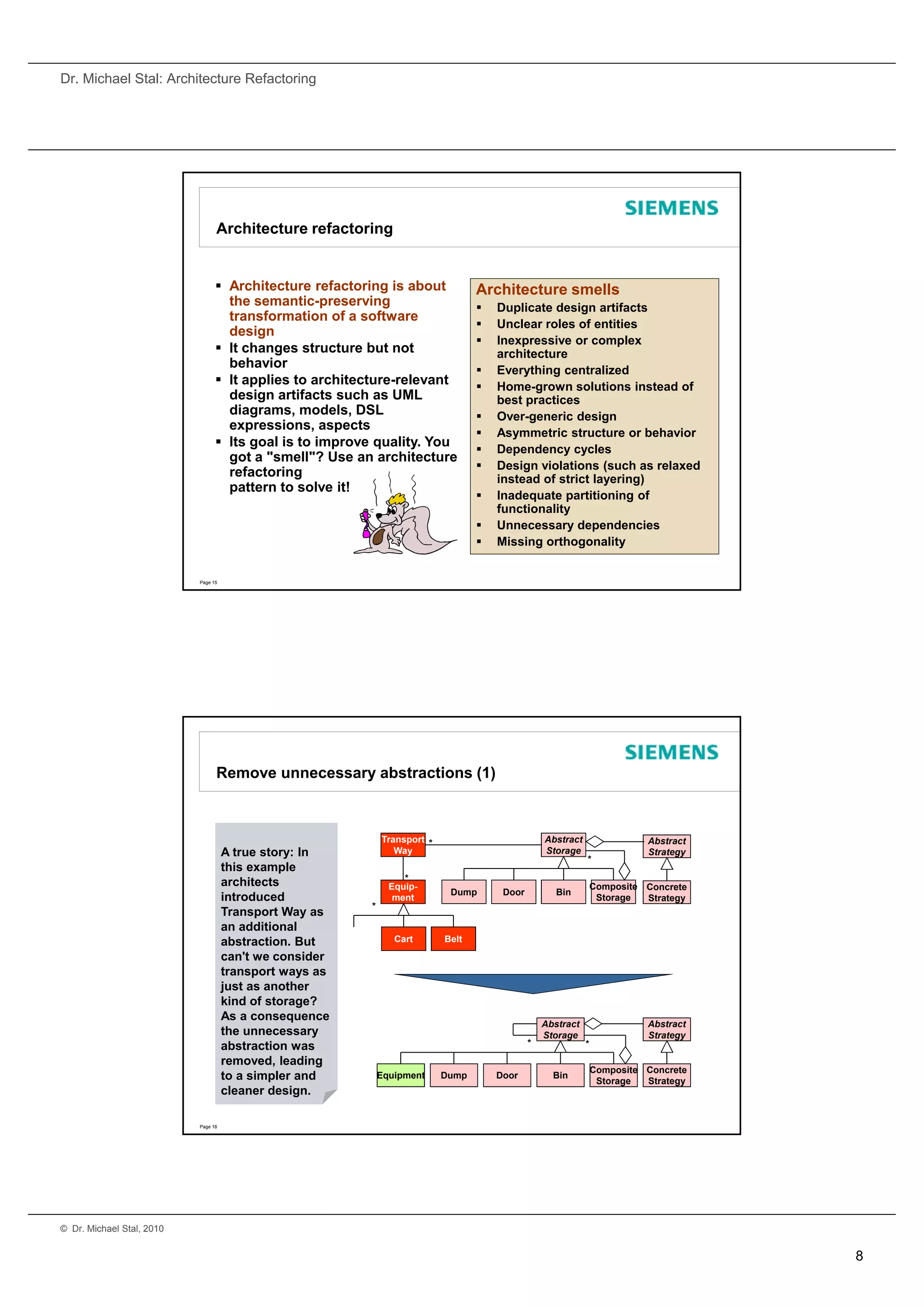
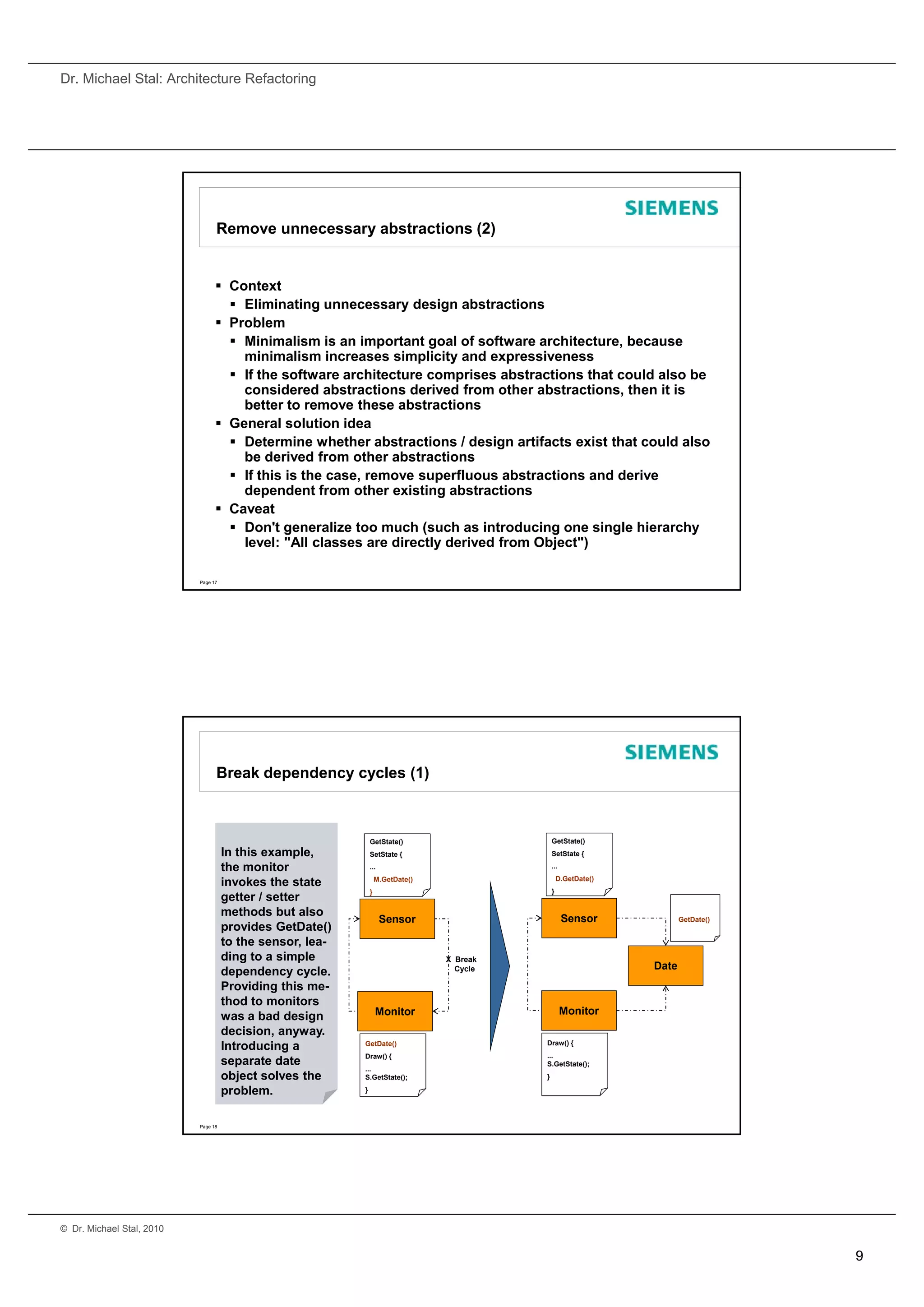
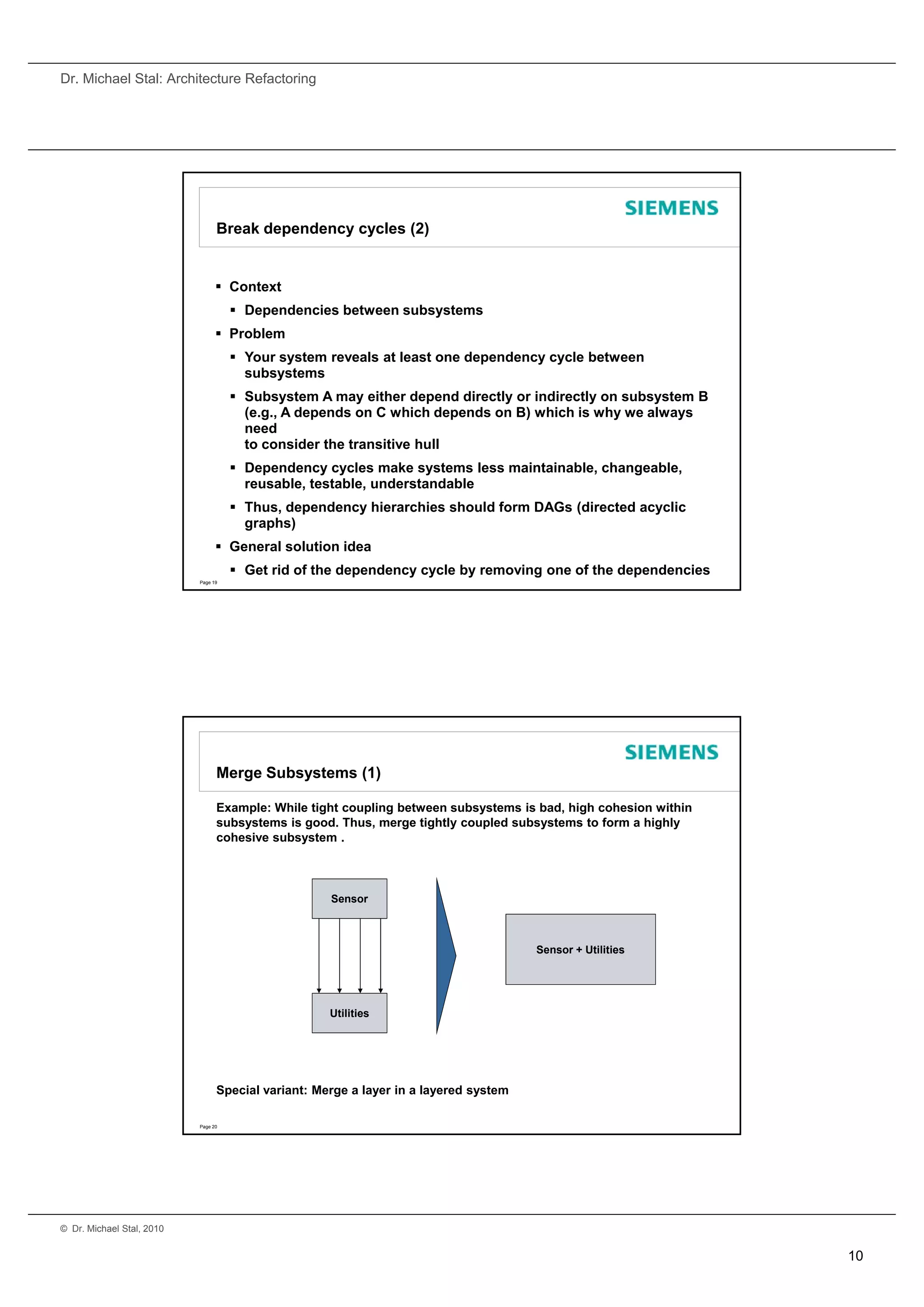
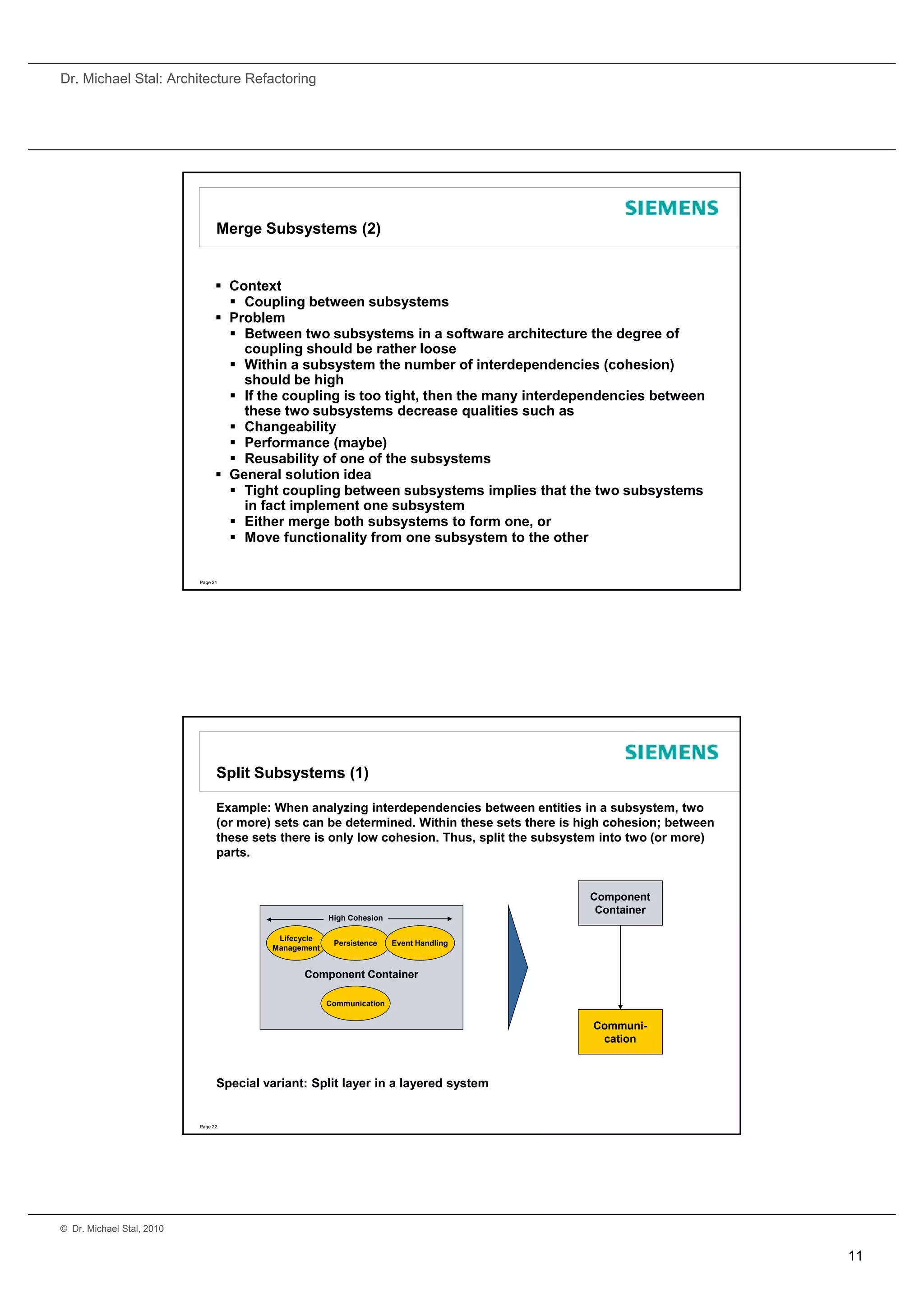
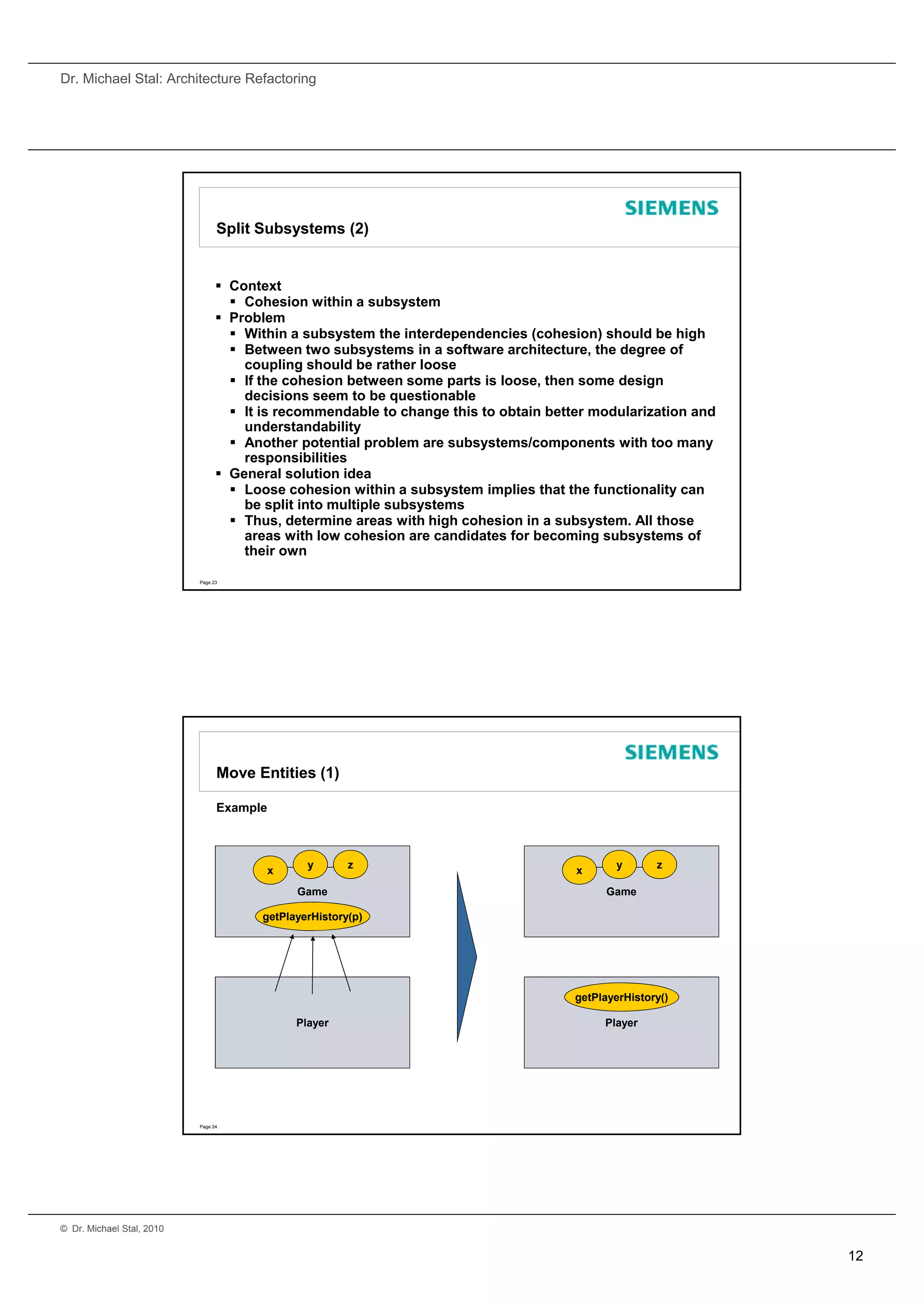
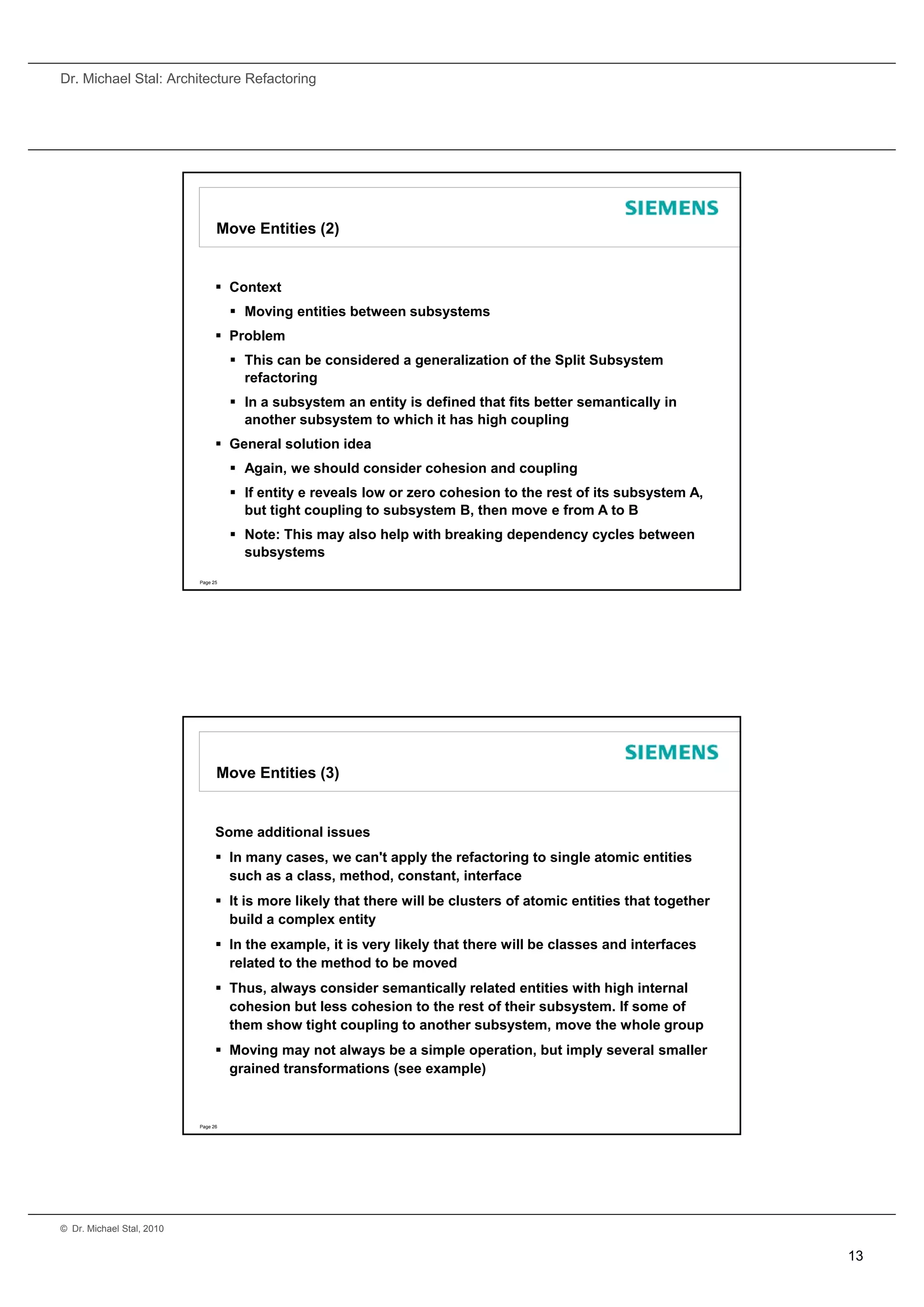
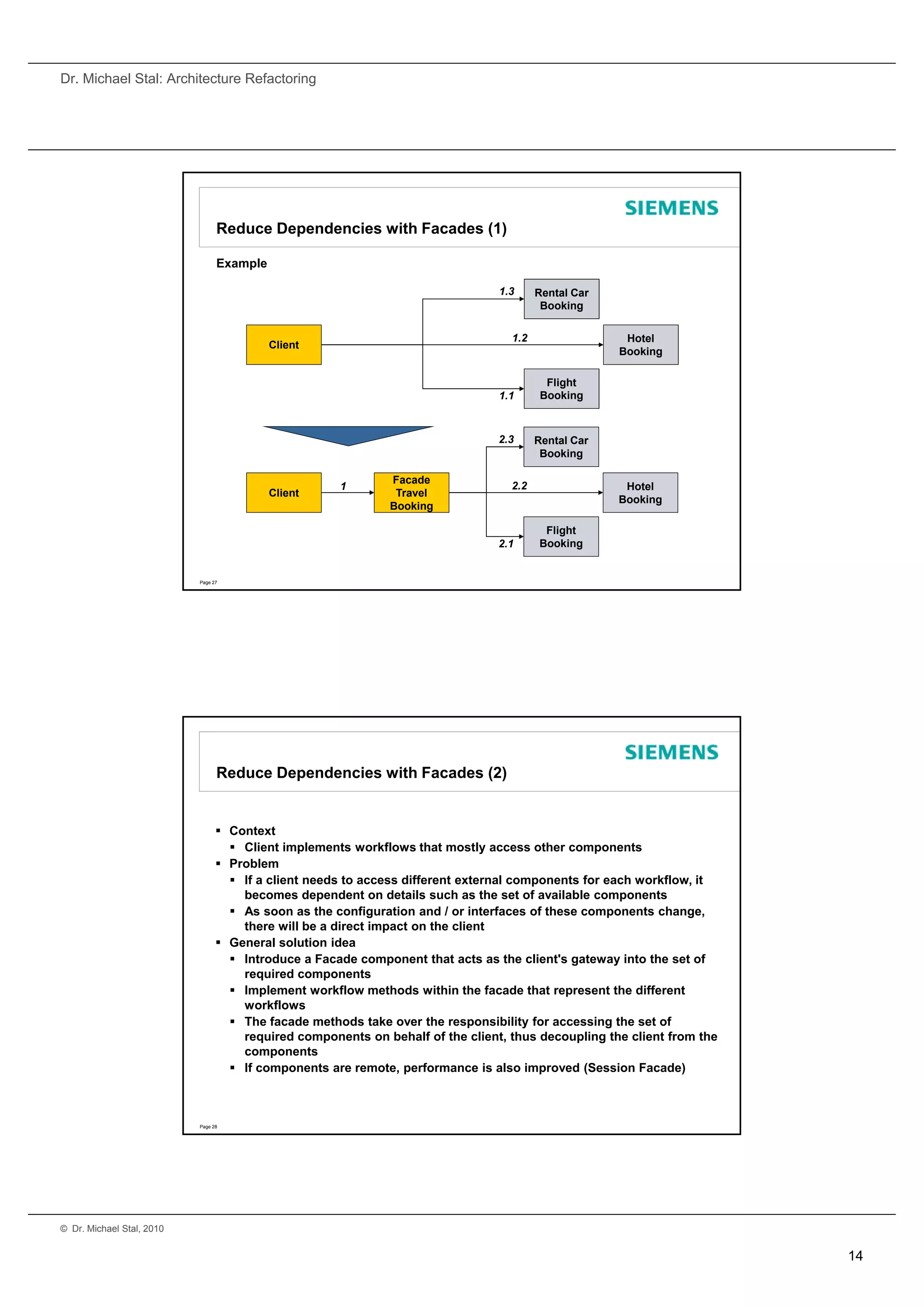
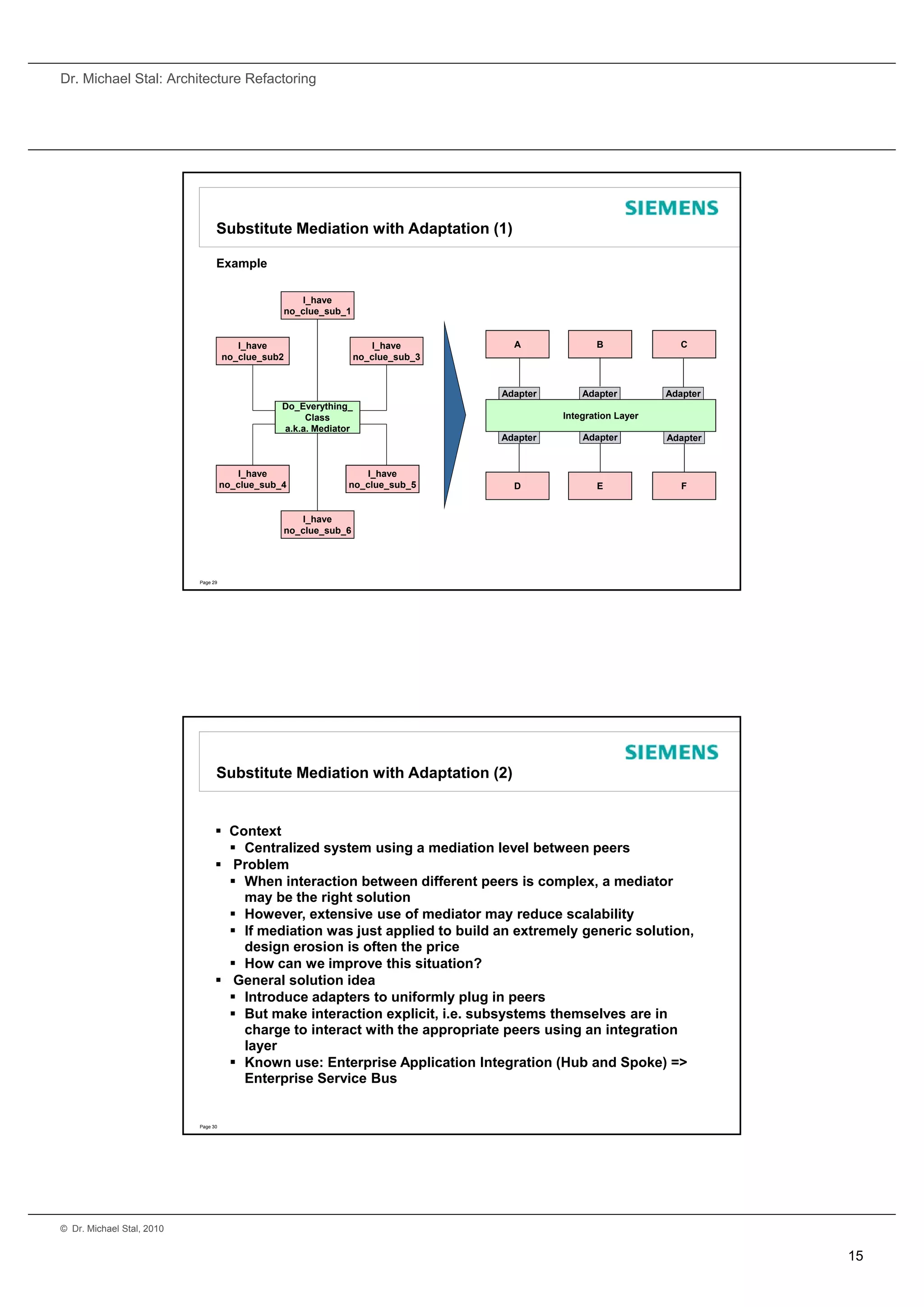
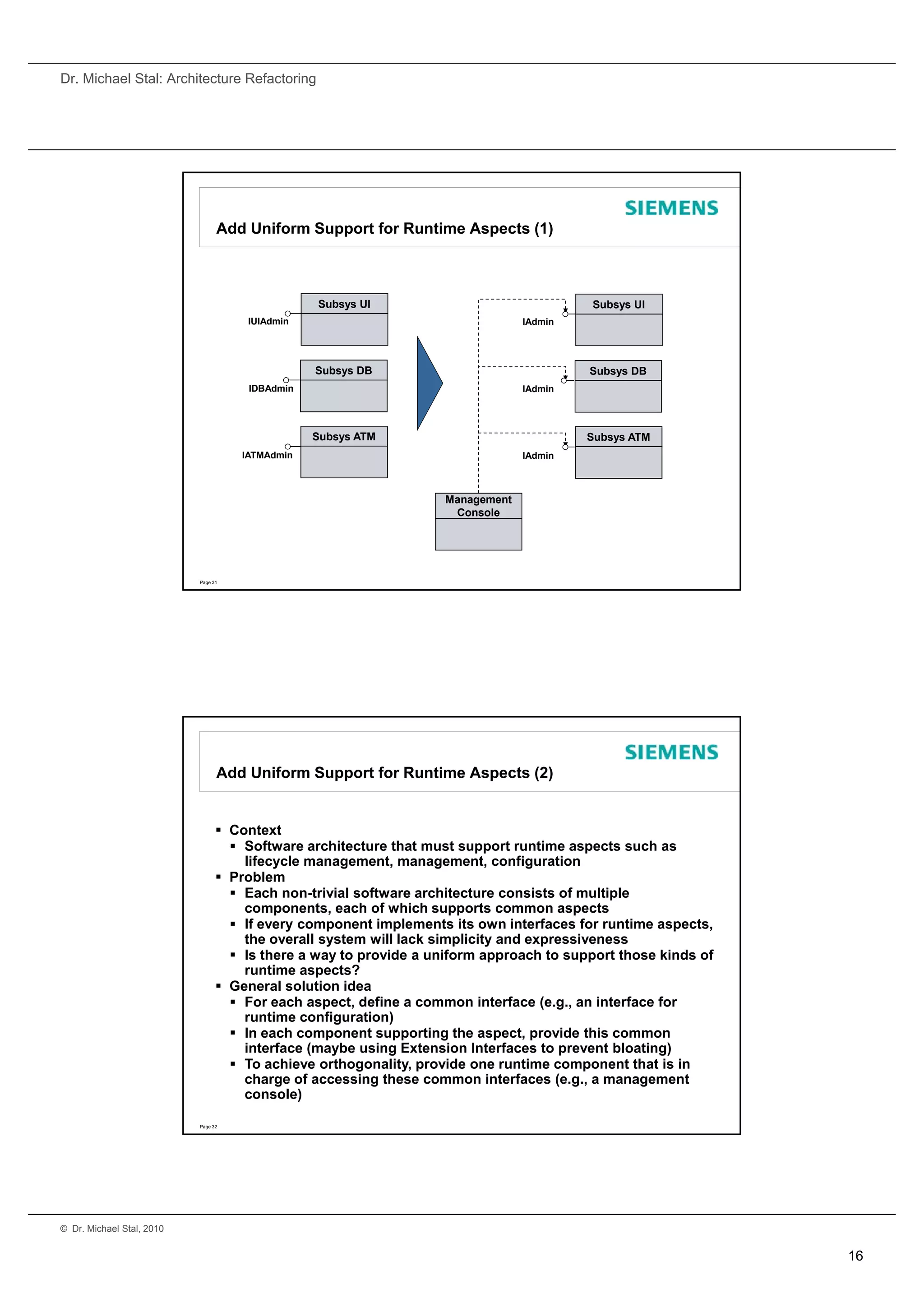
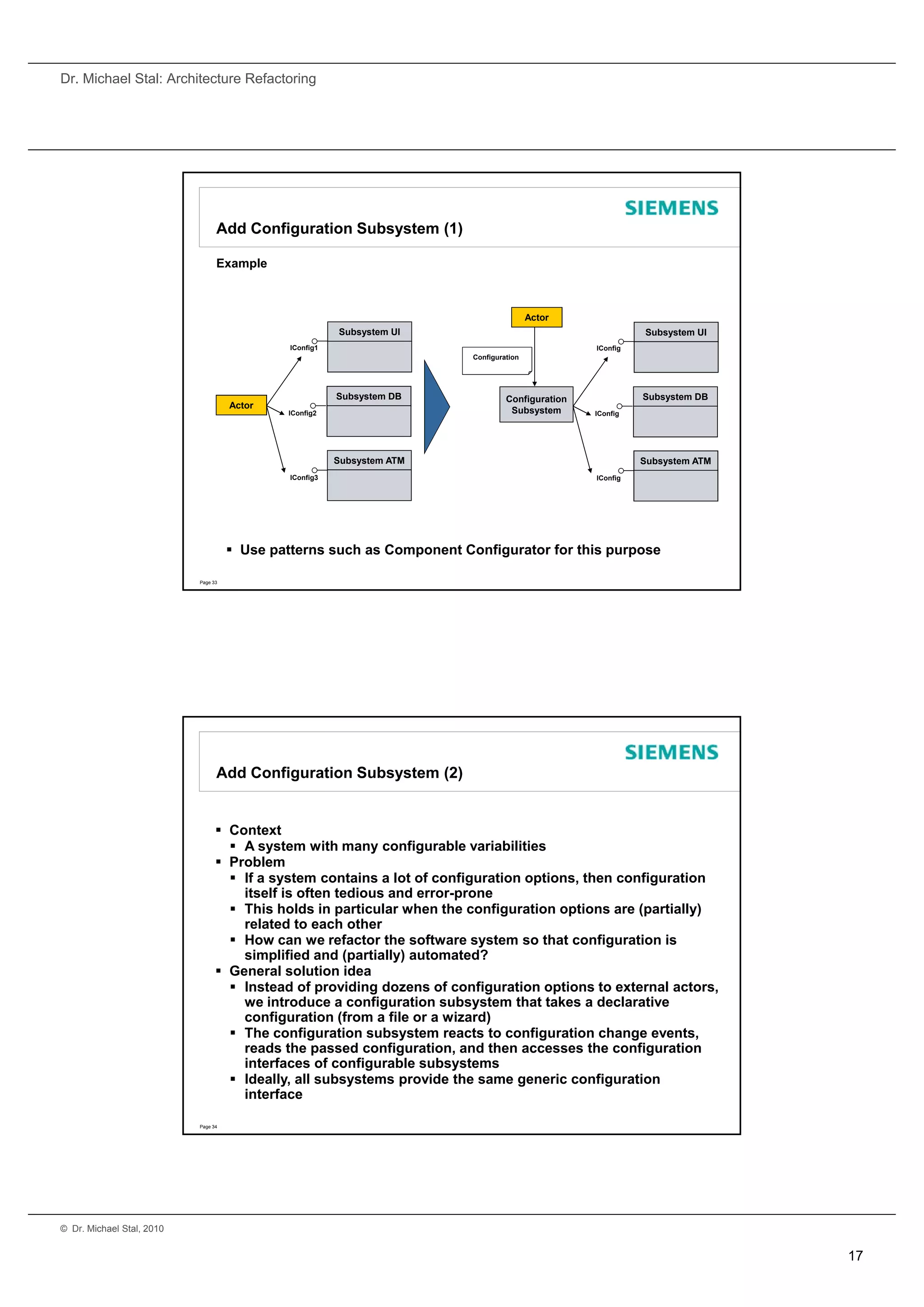
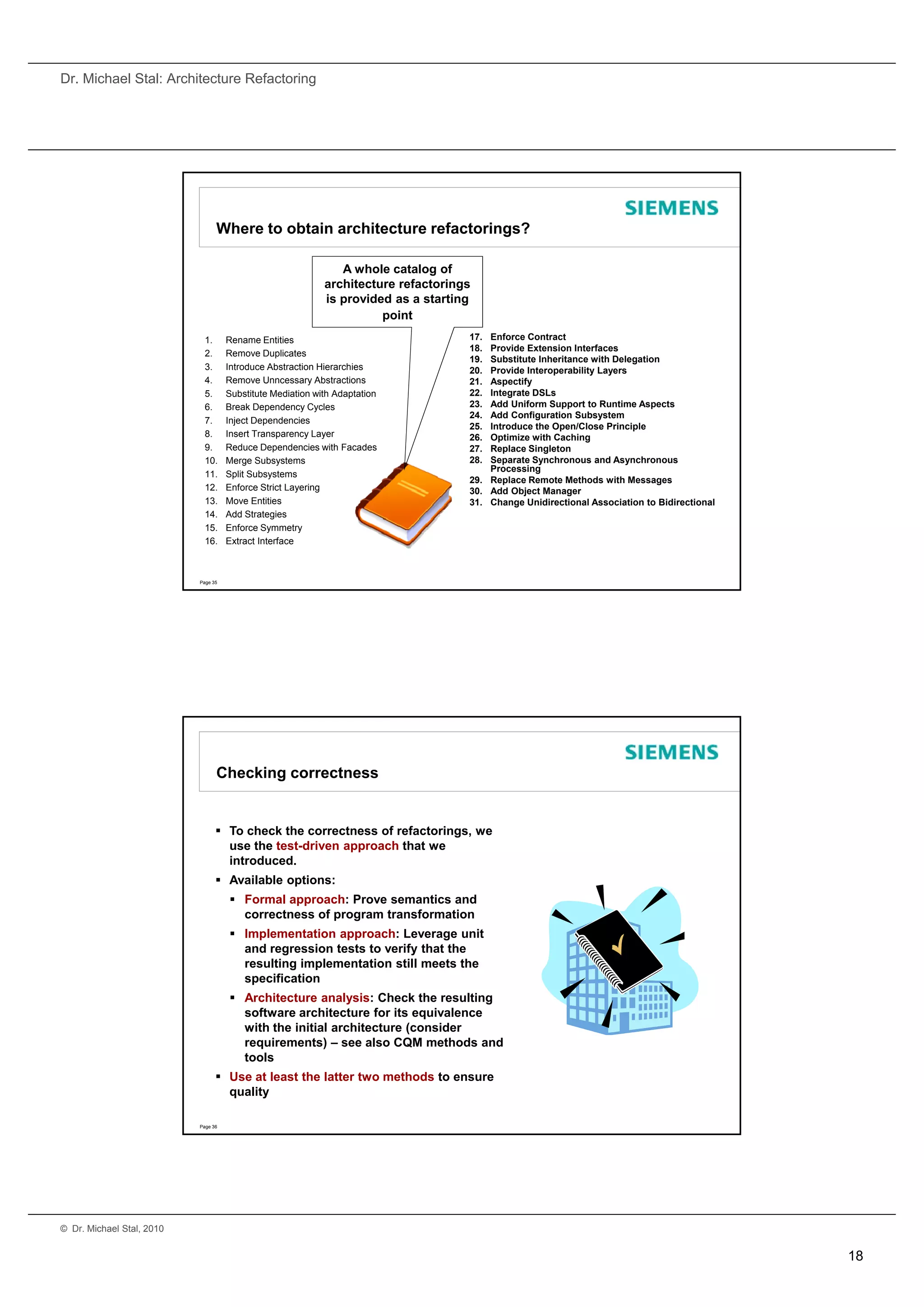
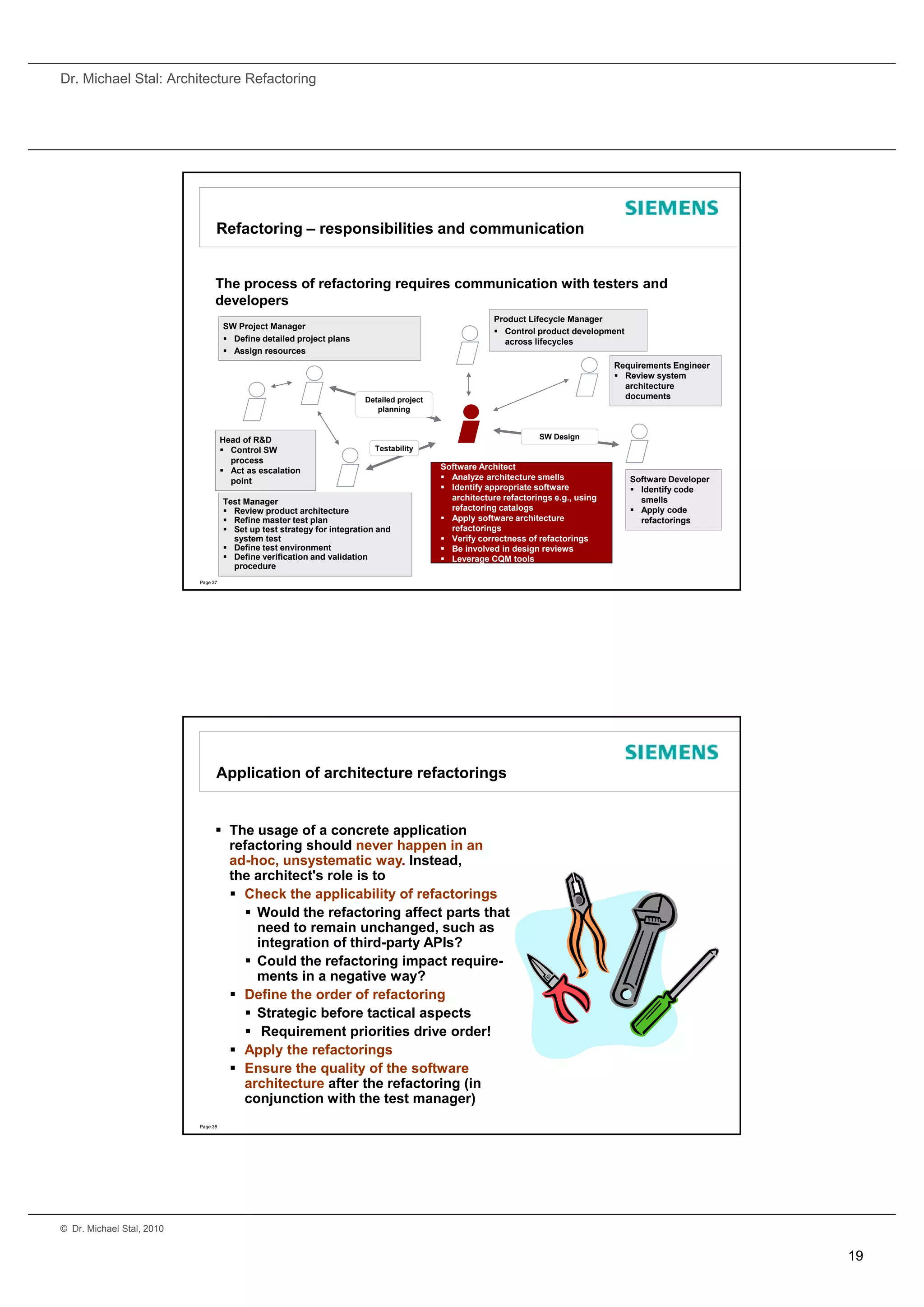
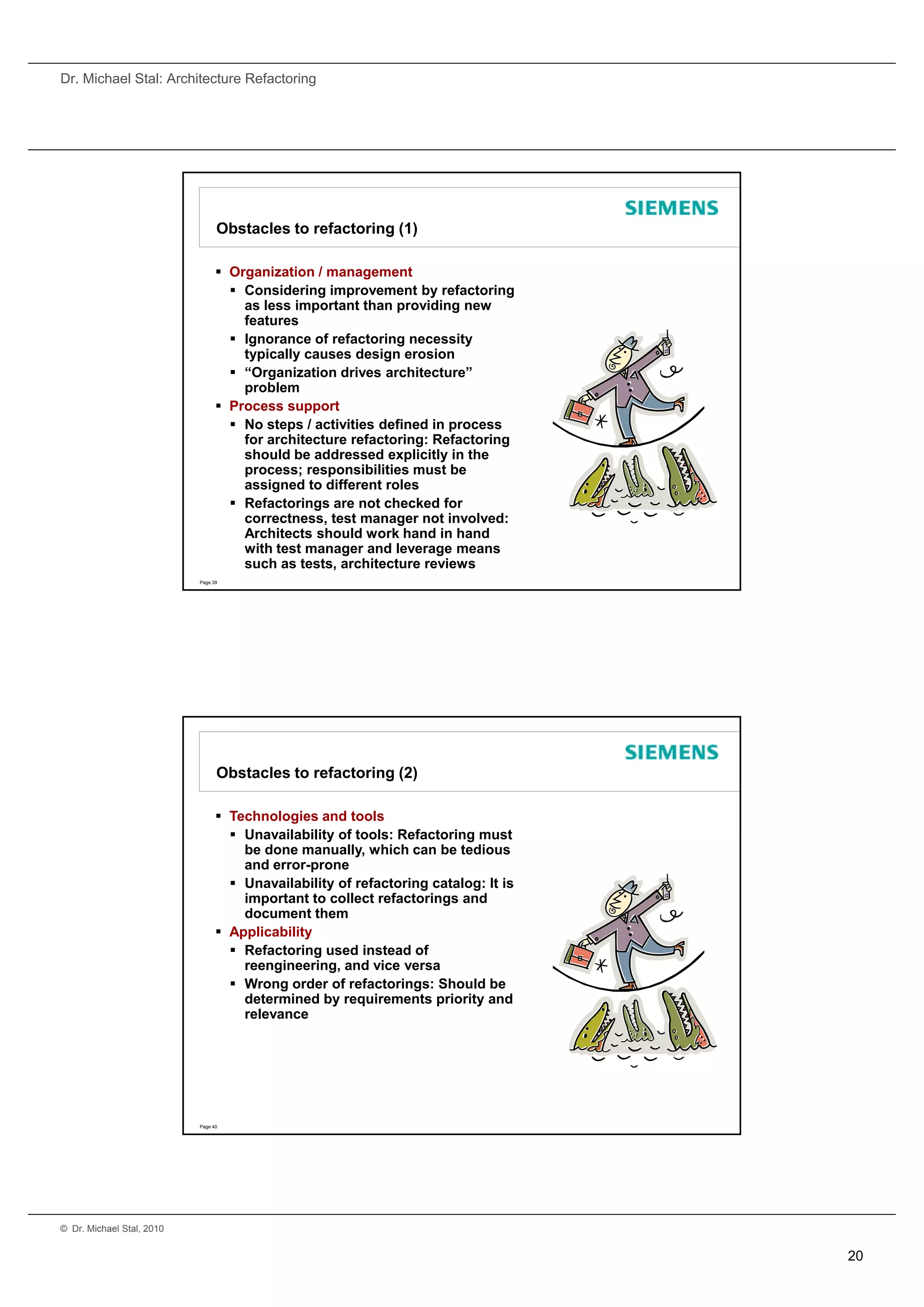
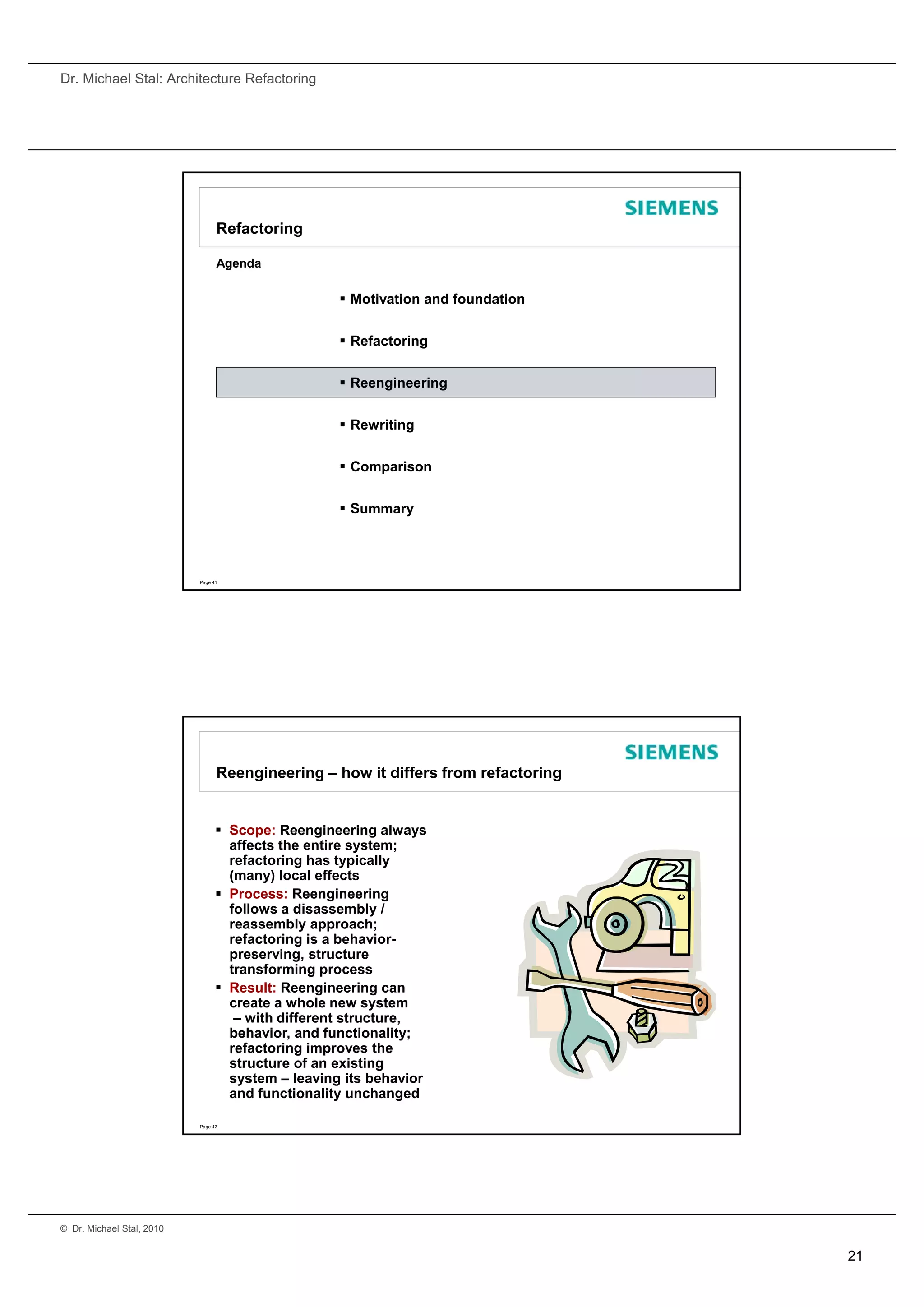
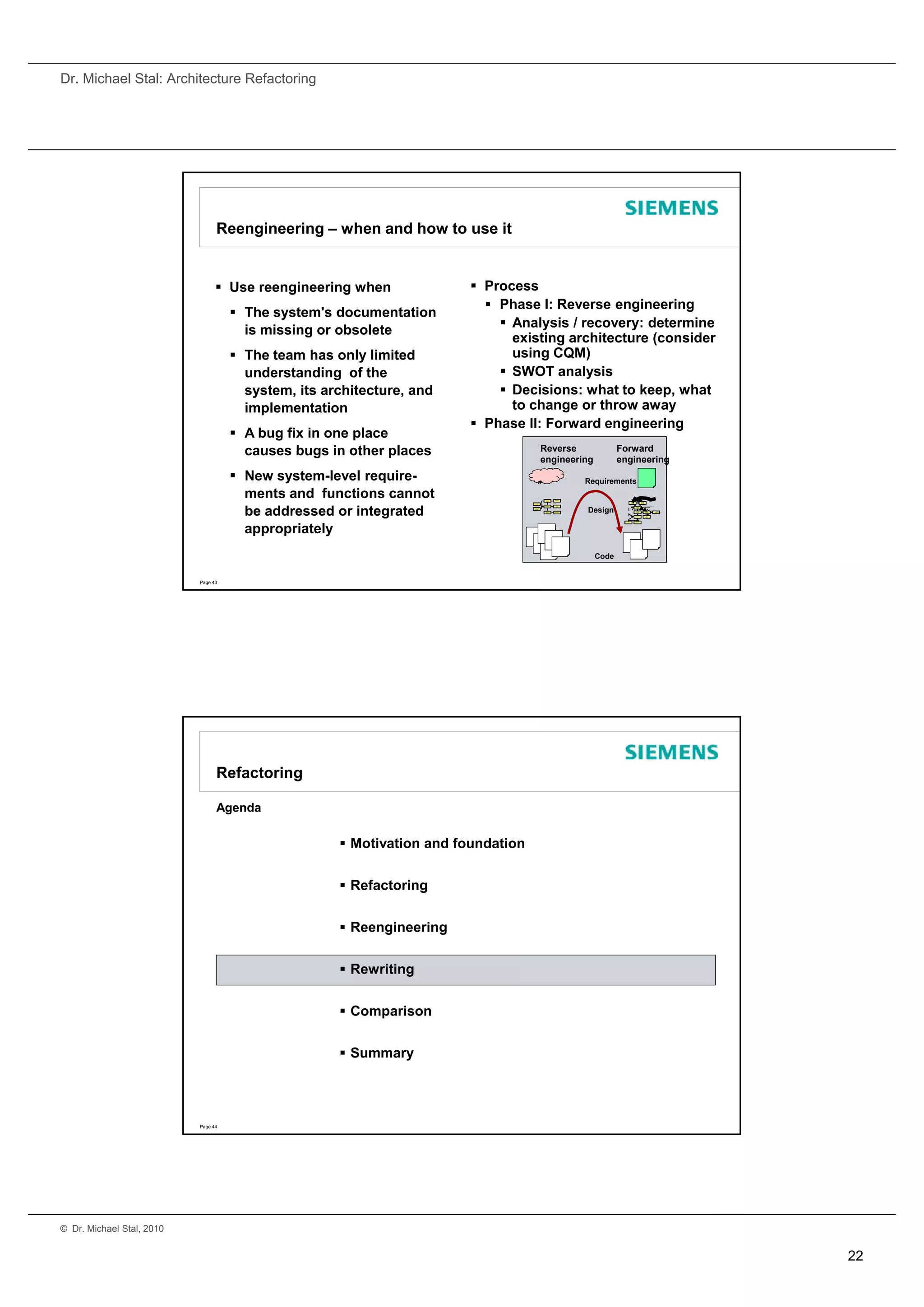
![Dr. Michael Stal: Architecture Refactoring
Rewriting in a Nutshell
Rewriting is a radical and fresh restart: existing design and code is
trashed and replaced by a whole new design and implementation.
Depending on focus:
Improves structure regarding:
Simplicity, visibility, spacing, symmetry,
emergence
Maintainability, readability, extensibility
Bug fixing
Provides new functionality
Improves its operational qualities
p p q
Improves design and code stability
As a consequence, rewriting addresses all
types of software quality: functional,
operational, and the various developmental
qualities.
Page 45
Learning from failure
Failure and understanding failure is a key
factor for successful design!
[Henry Petroski]
Before you’re going to rewrite, check what
went wrong in the project that developed the
previous application
Page 46
© Dr. Michael Stal, 2010
23](https://image.slidesharecdn.com/accu2010archrefactoring-100429173655-phpapp01/75/Accu2010-archrefactoring-23-2048.jpg)
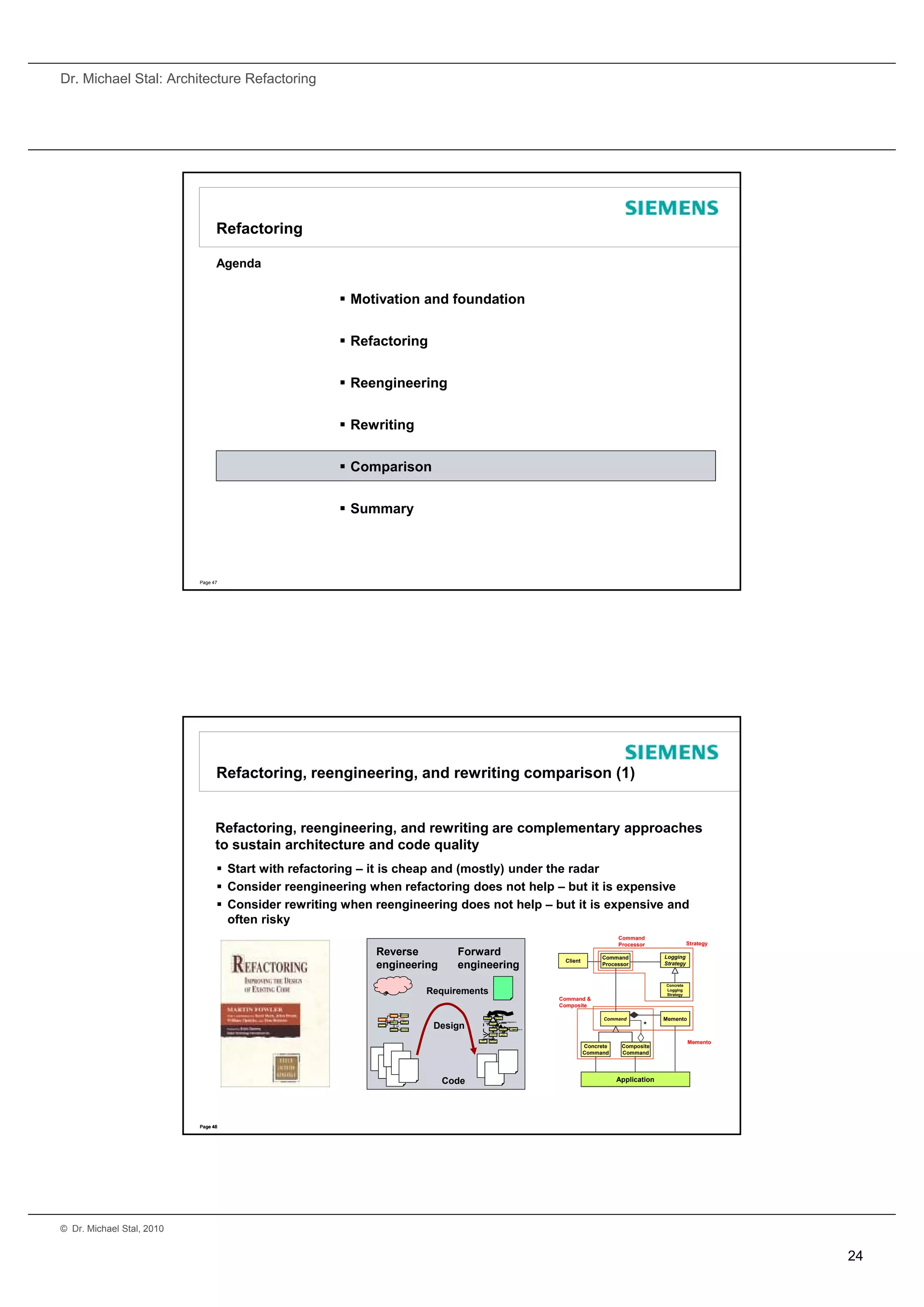
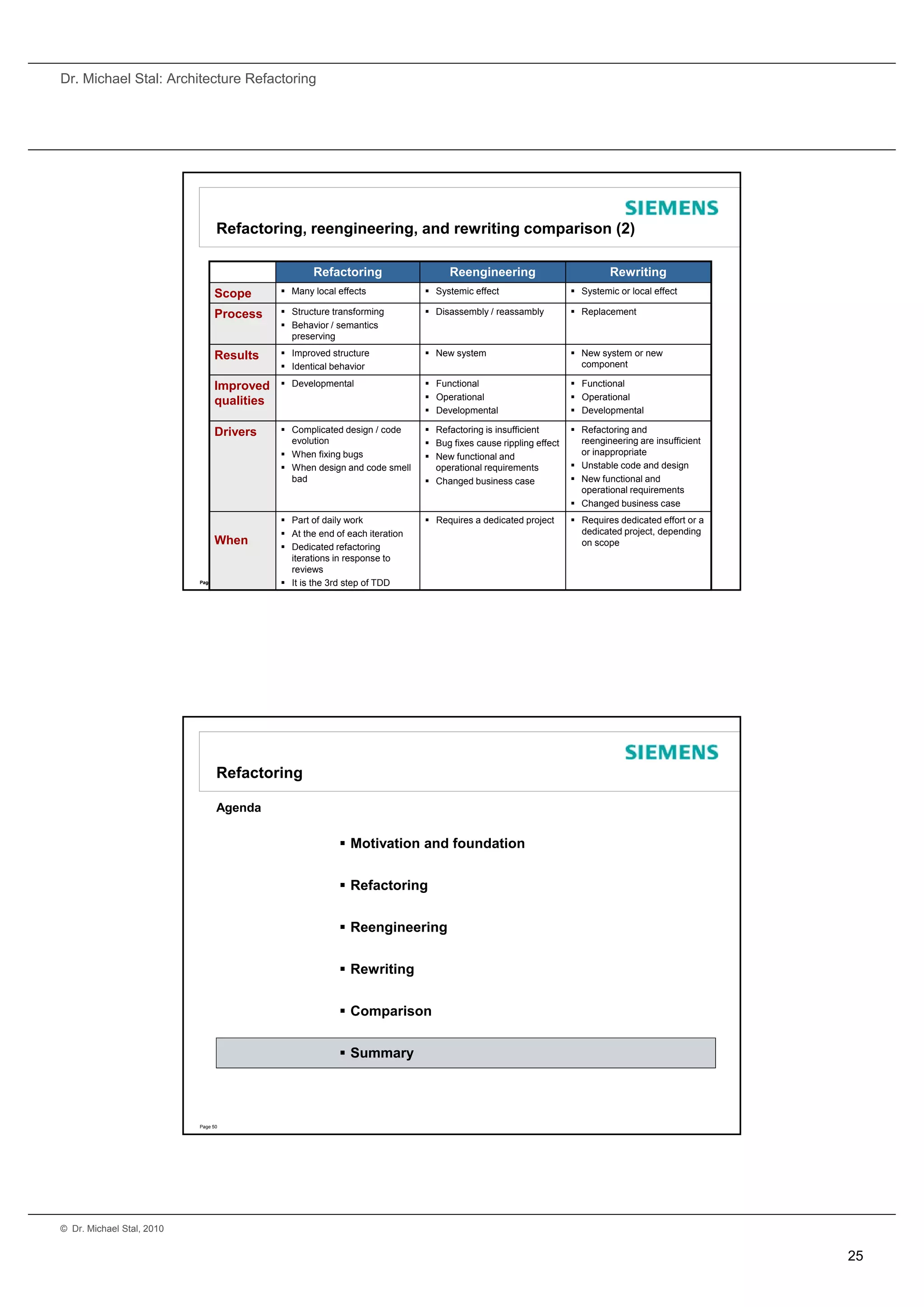
![Dr. Michael Stal: Architecture Refactoring
What we learned
Refactoring changes artifacts without changing
external behavior. It helps with quality improvement
and necessary changes
d h
In contrast, reengineering is a complete redesign of
a complete architecture and typically changes
external behavior
If reengineering is not appropriate, it is often the
best alternative to rewrite a system or its parts
All methods are essential. Use the right one for the
right purpose
Testing and architecture introspections are
important when refactoring, reengineering,
i t t h f t i i i
rewriting
You as a software architect are responsible to
Detect architecture smells
Find and apply appropriate refactorings
Perform QA of refactoring activities
Page 51
A departing thought
Each problem that I solved became a rule
which served afterwards to solve other
problems.
[René Descartes, 1596–1650, in "Discours
de la Methode"]
Page 52
© Dr. Michael Stal, 2010
26](https://image.slidesharecdn.com/accu2010archrefactoring-100429173655-phpapp01/75/Accu2010-archrefactoring-26-2048.jpg)
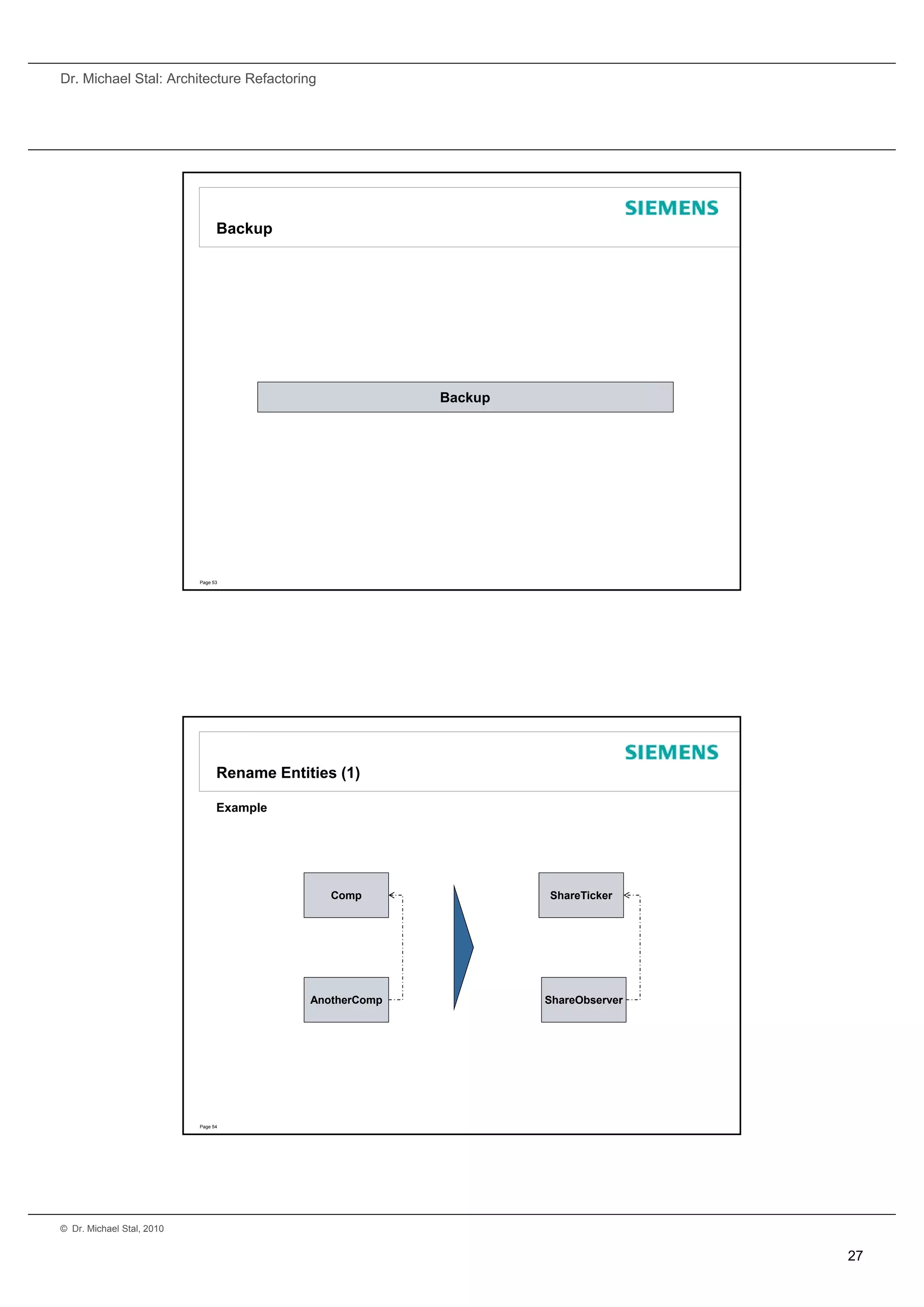
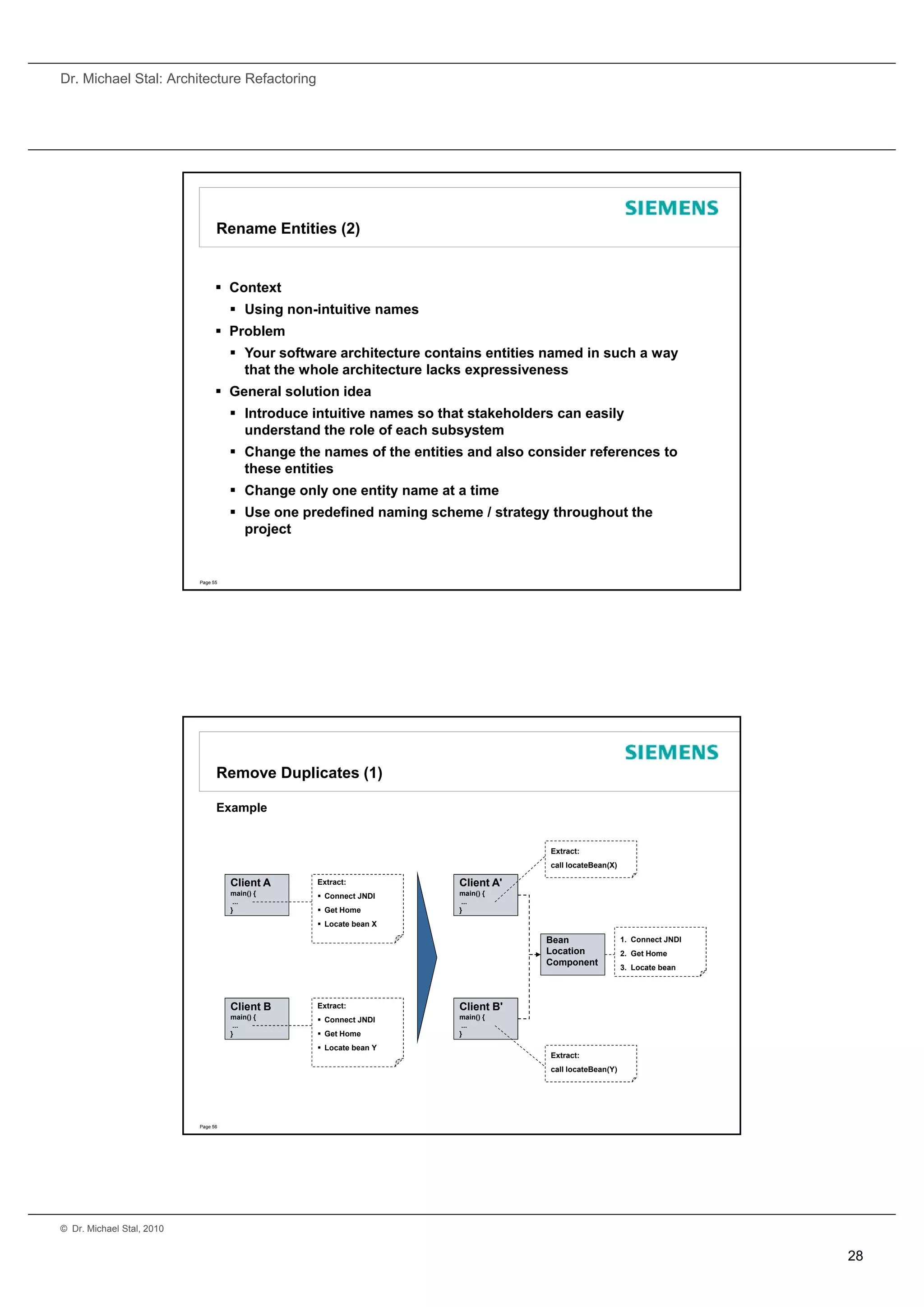
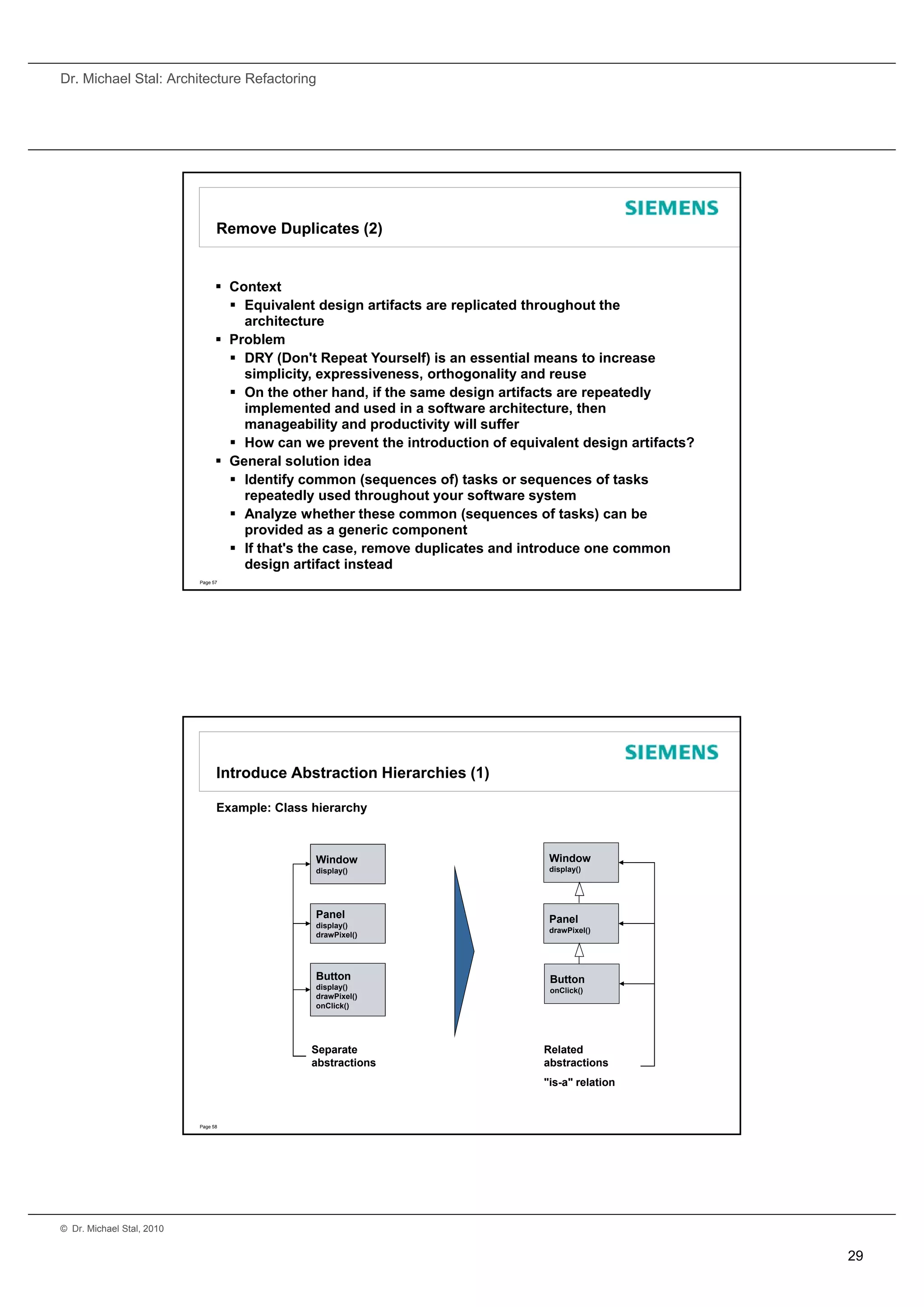
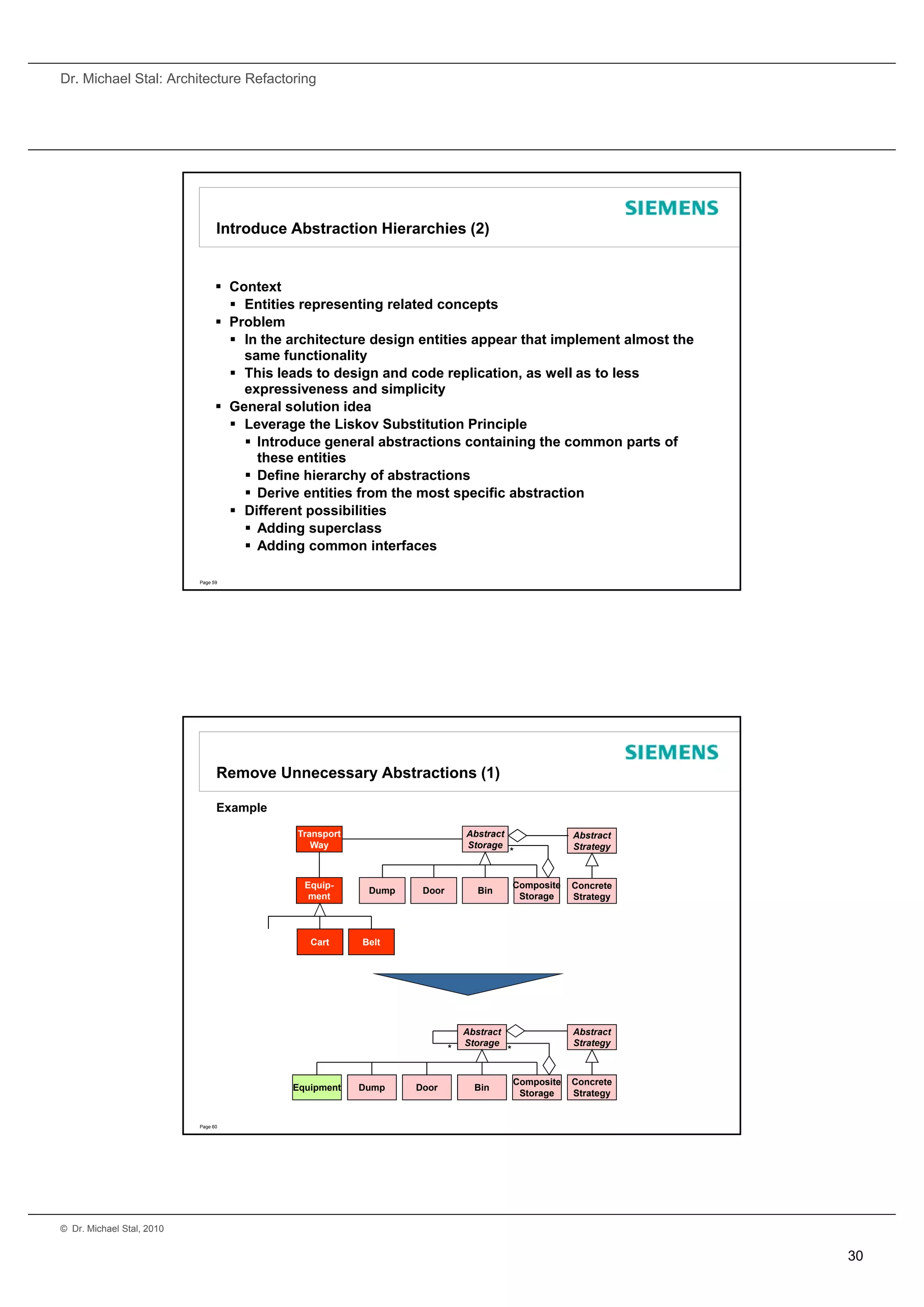
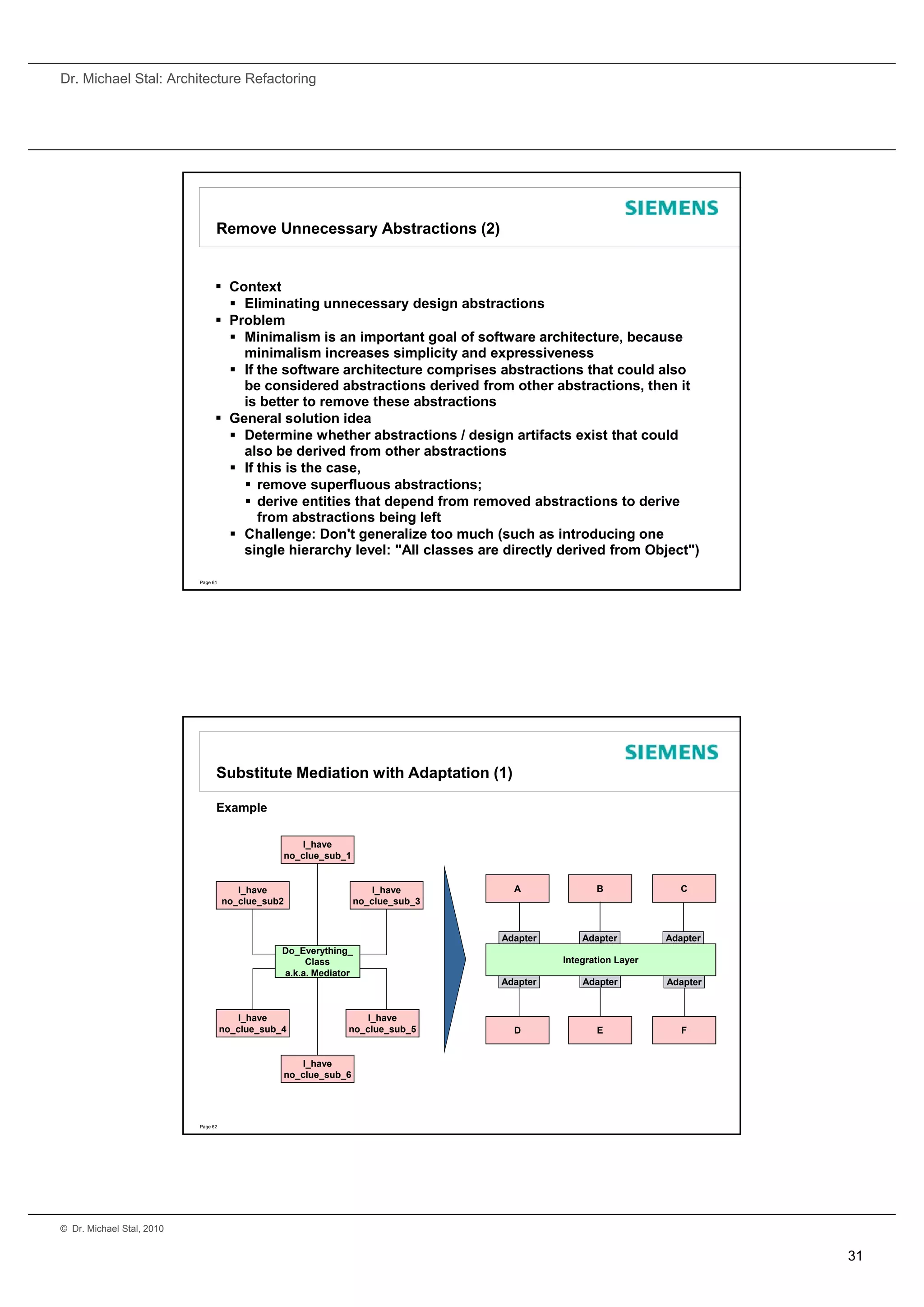
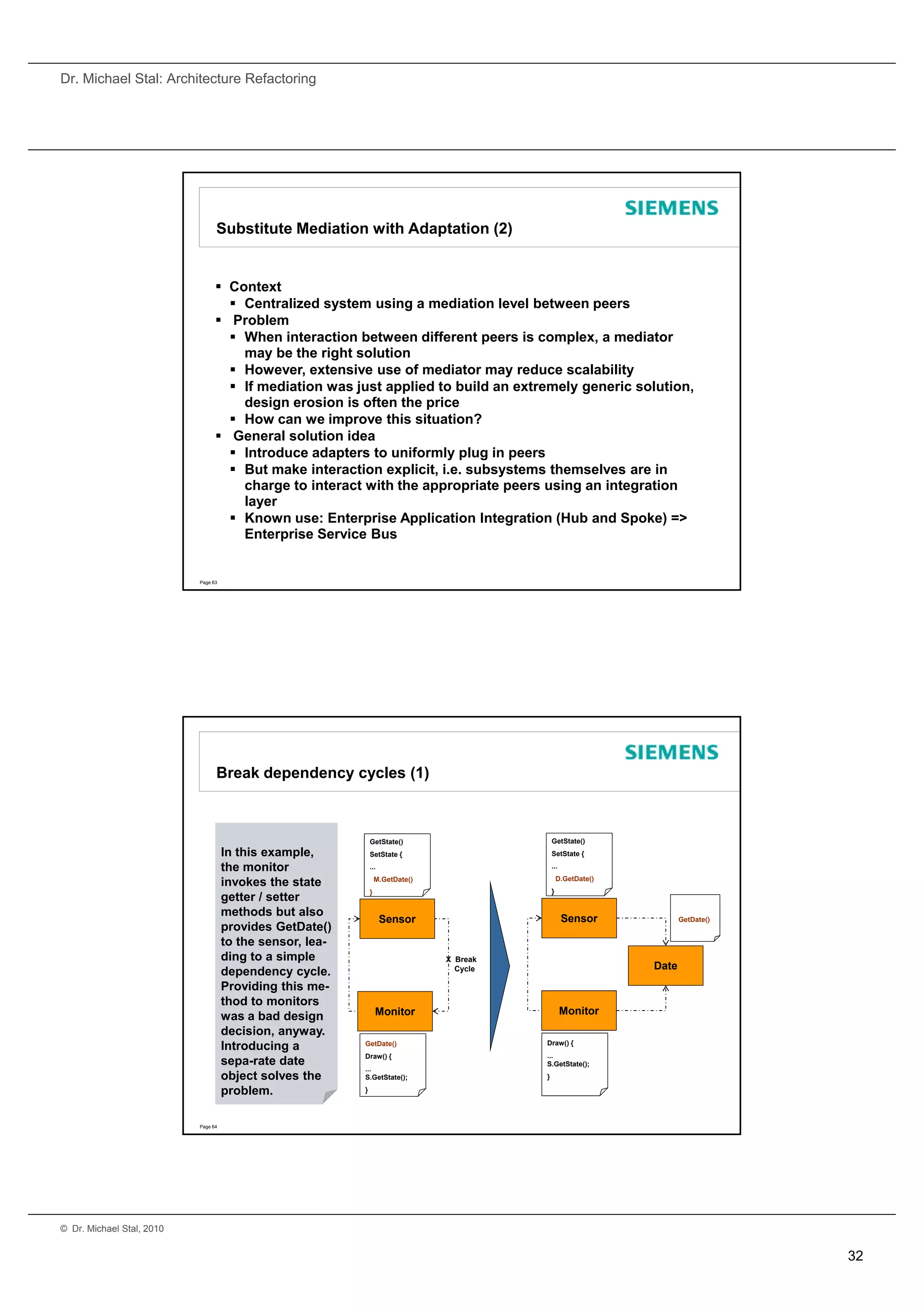
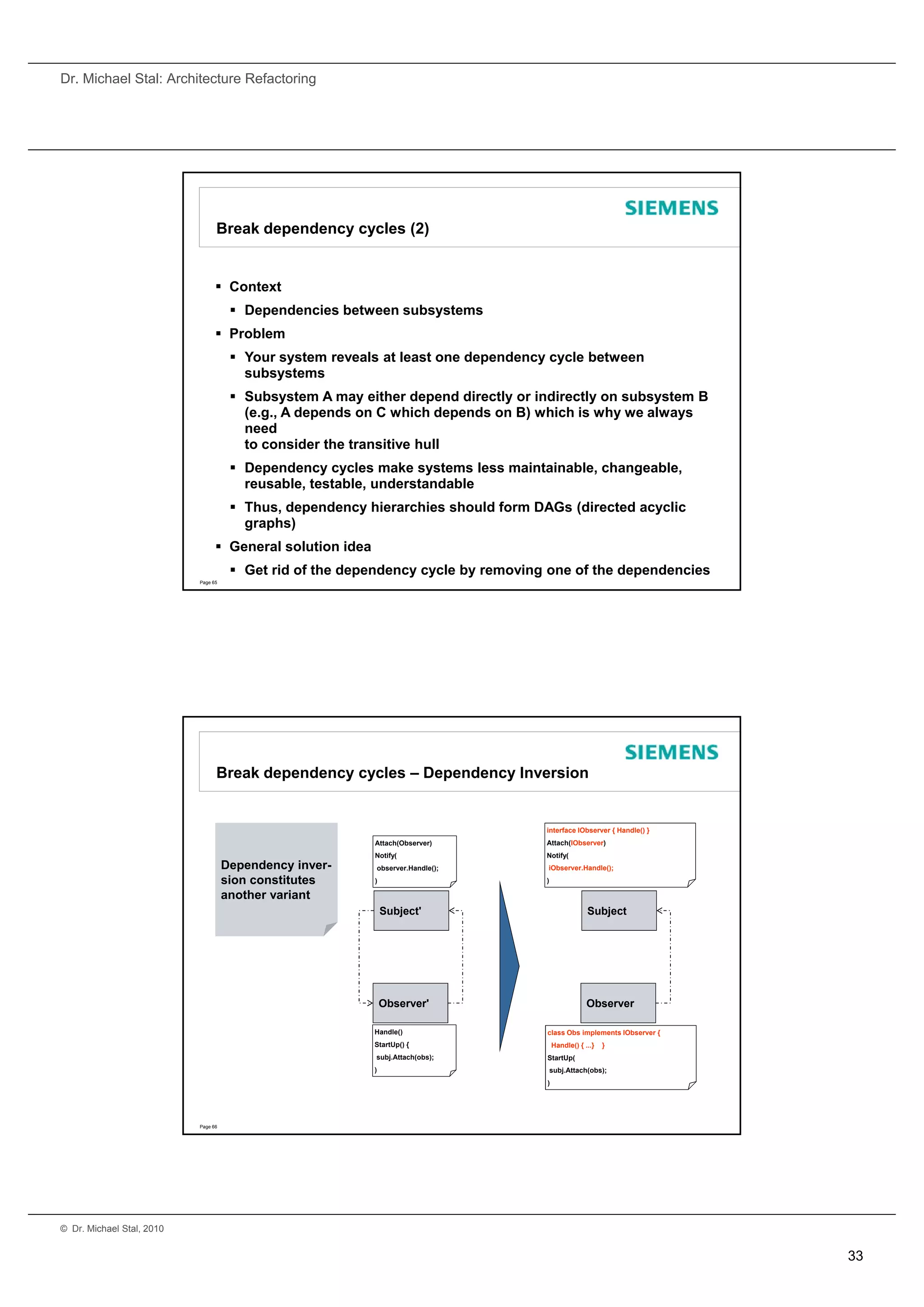
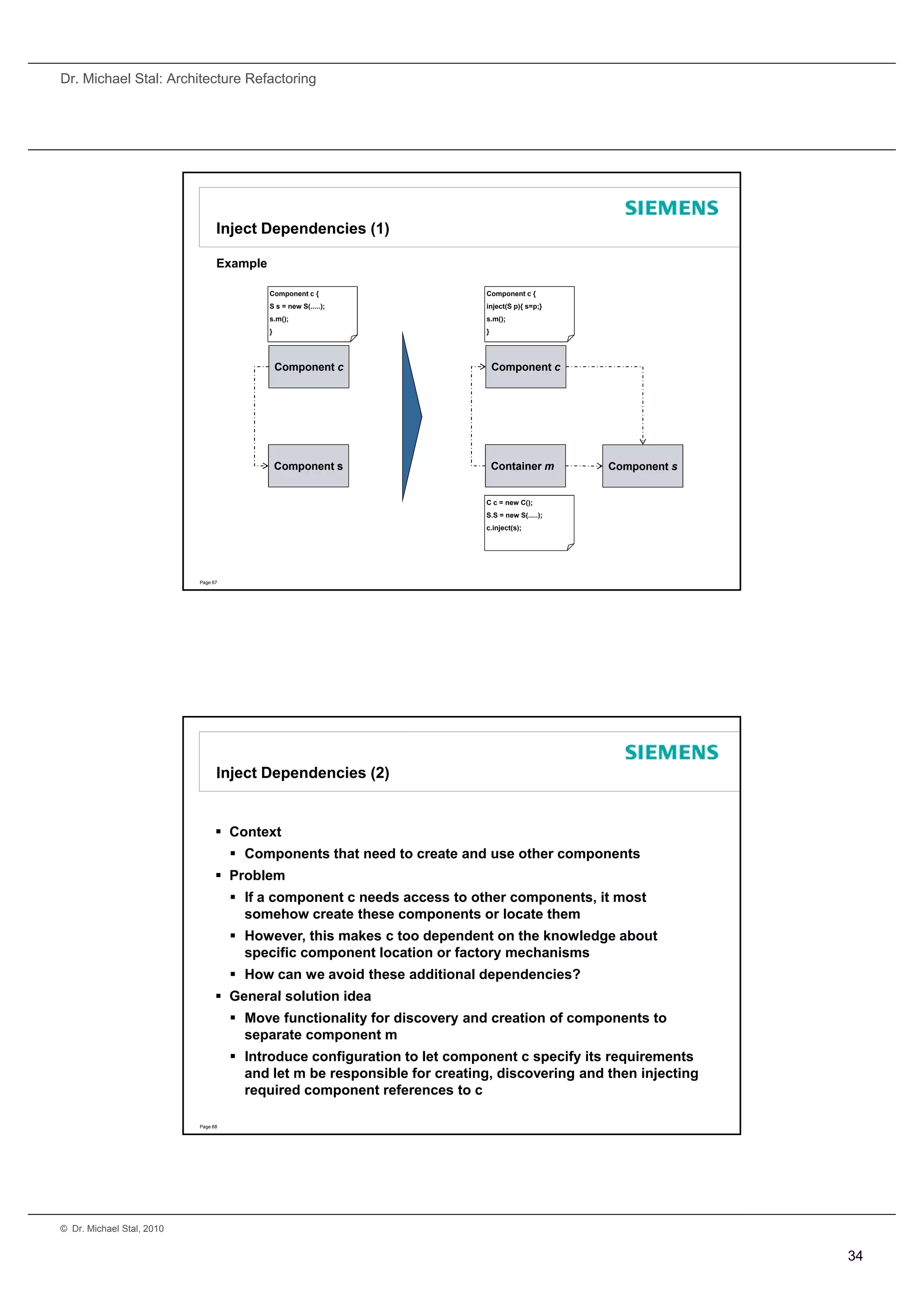
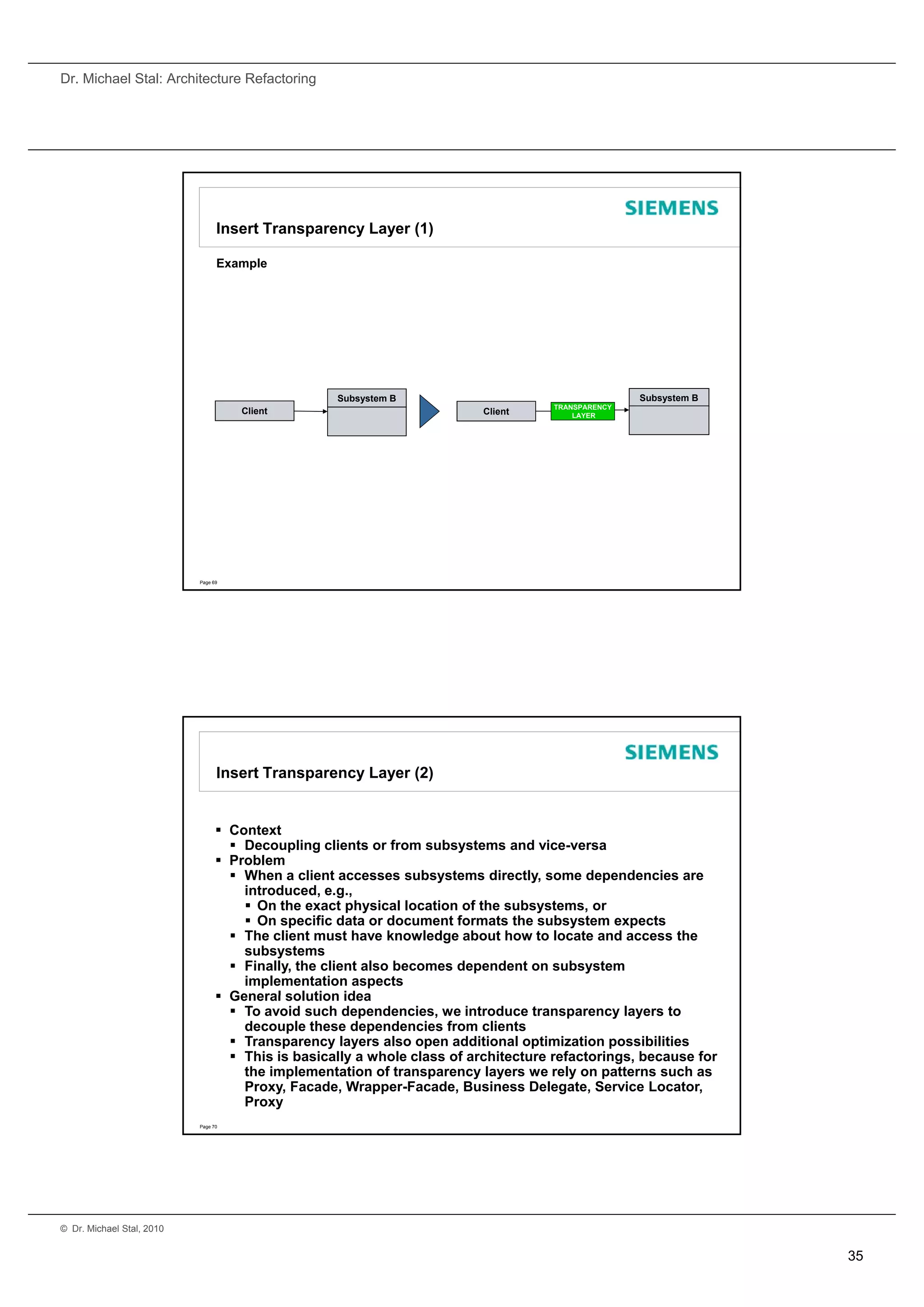
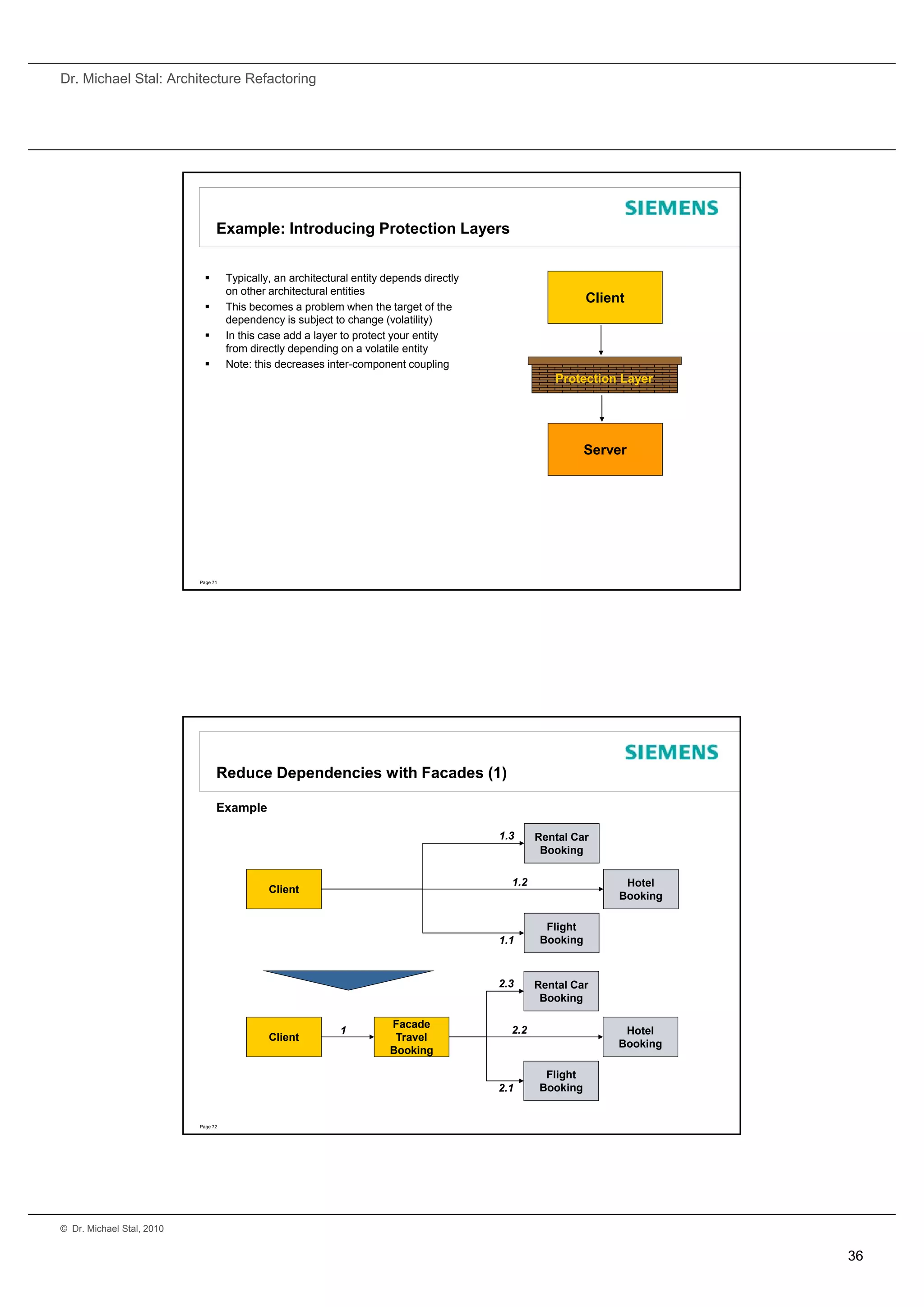
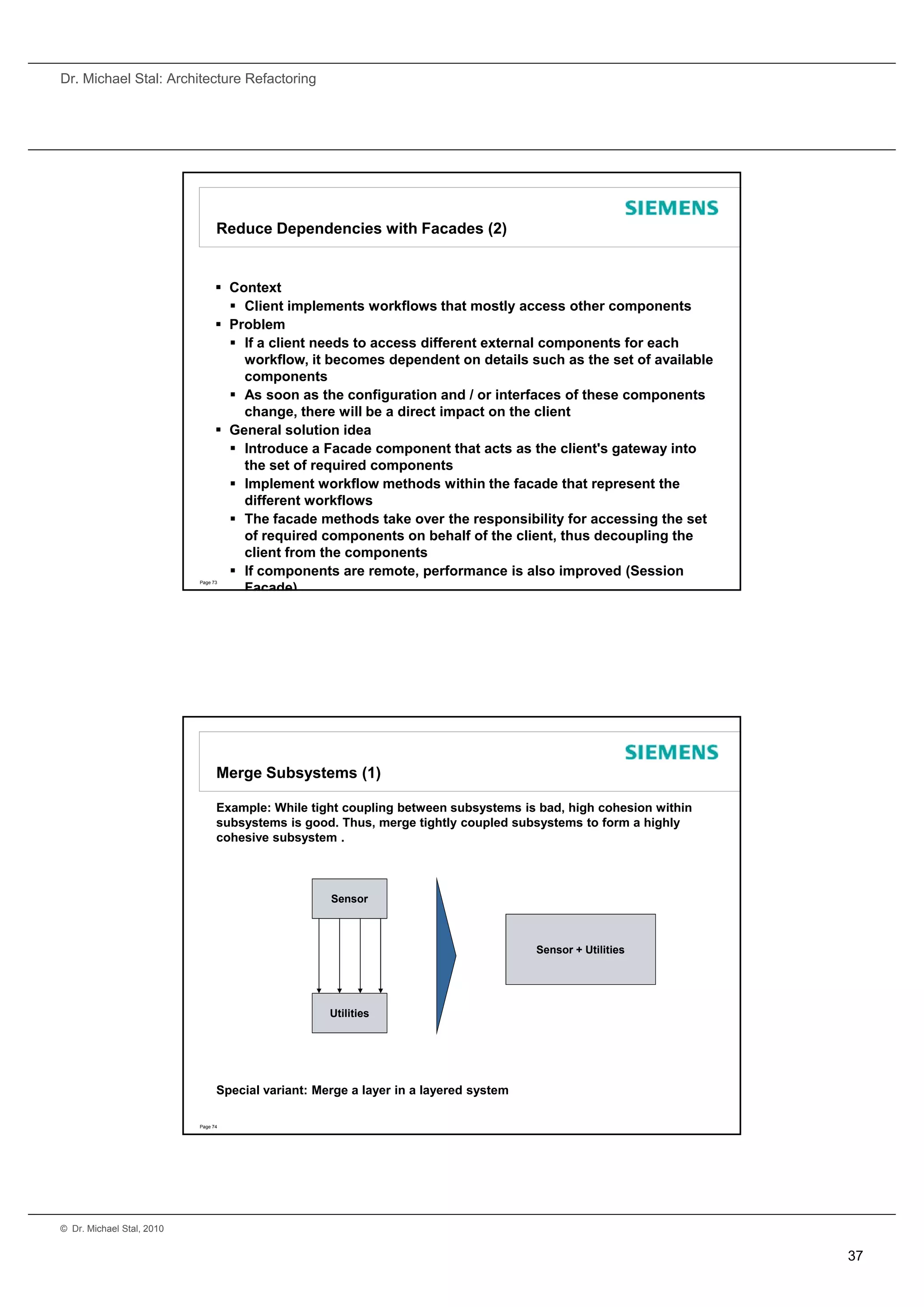
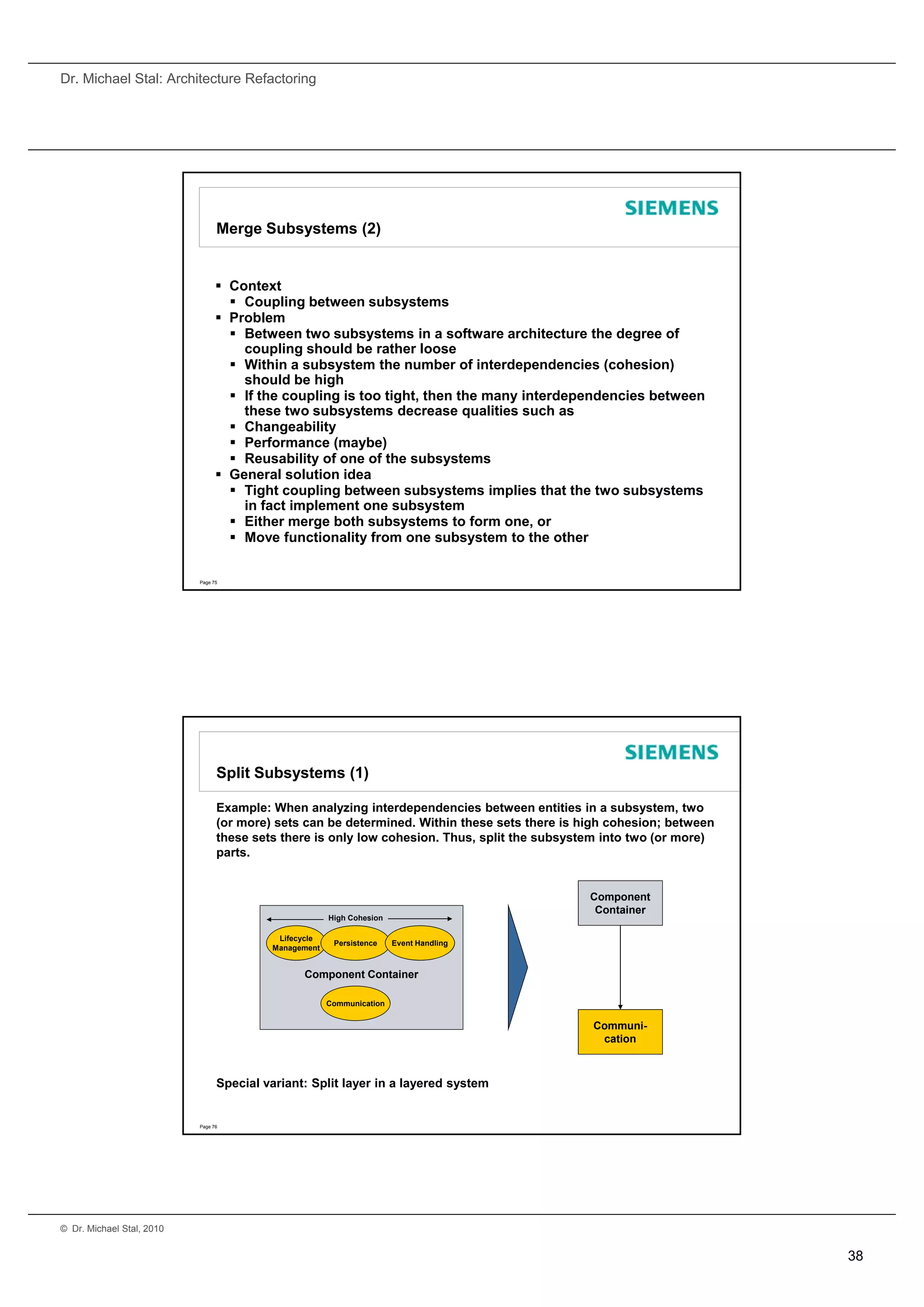
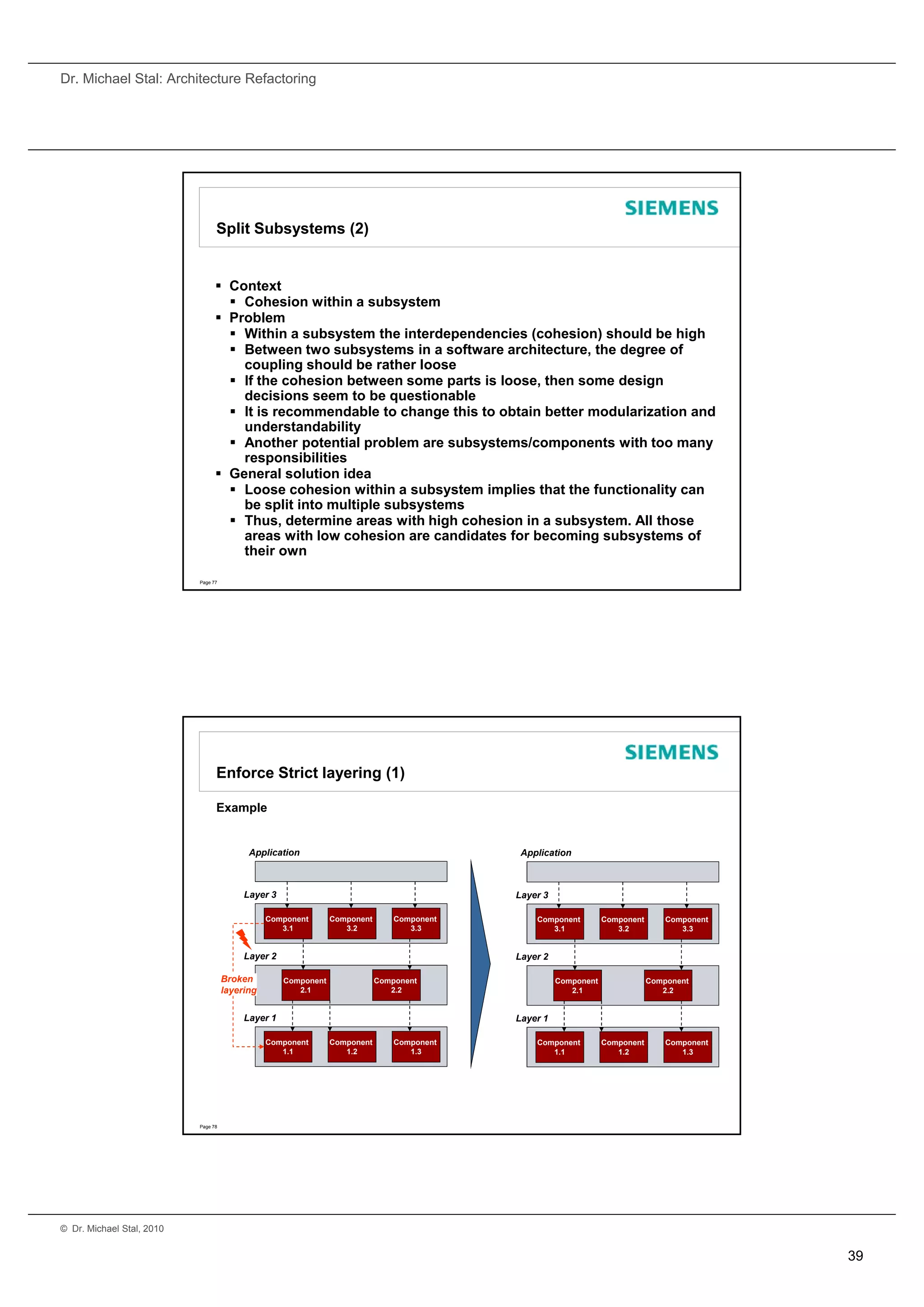
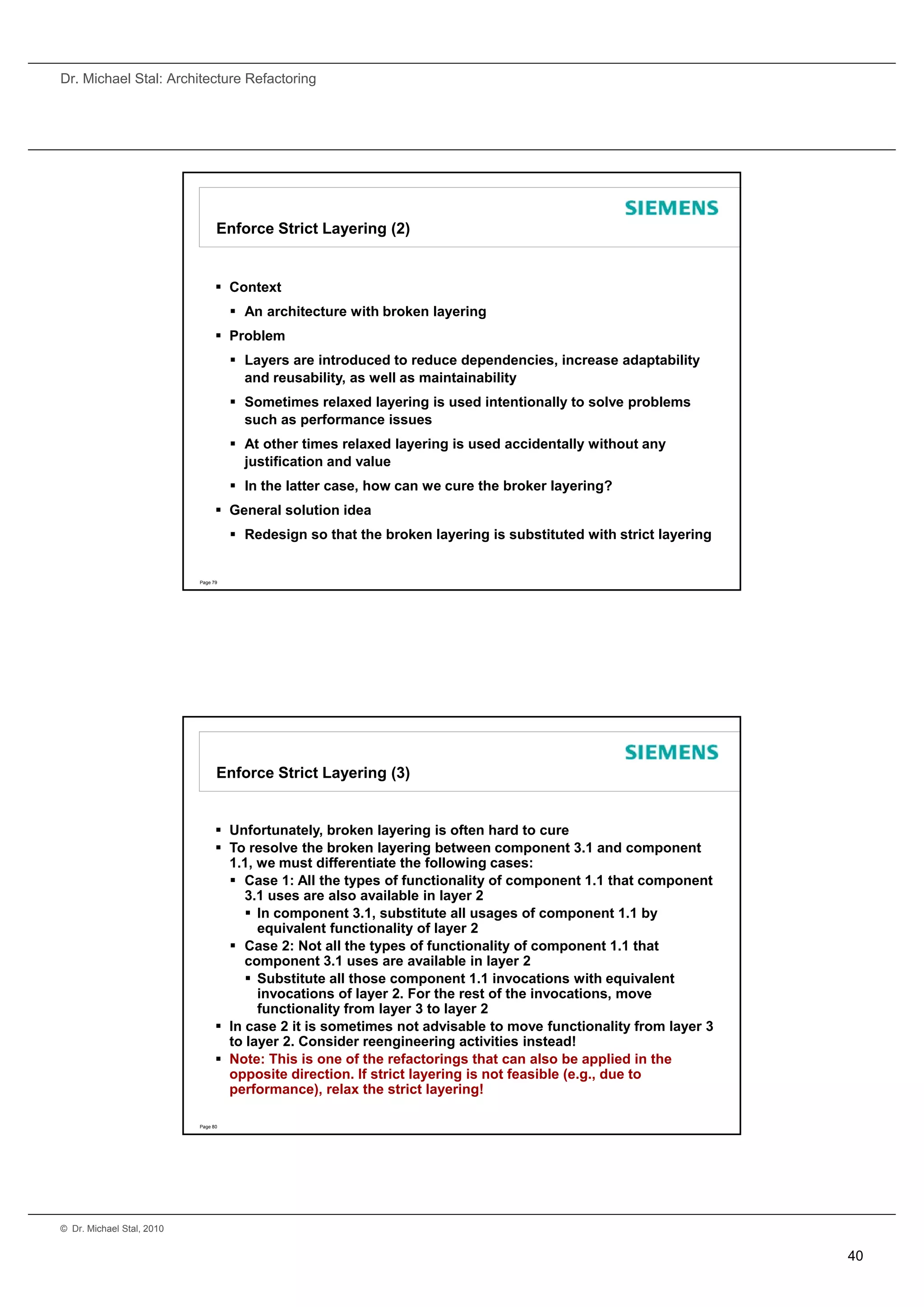
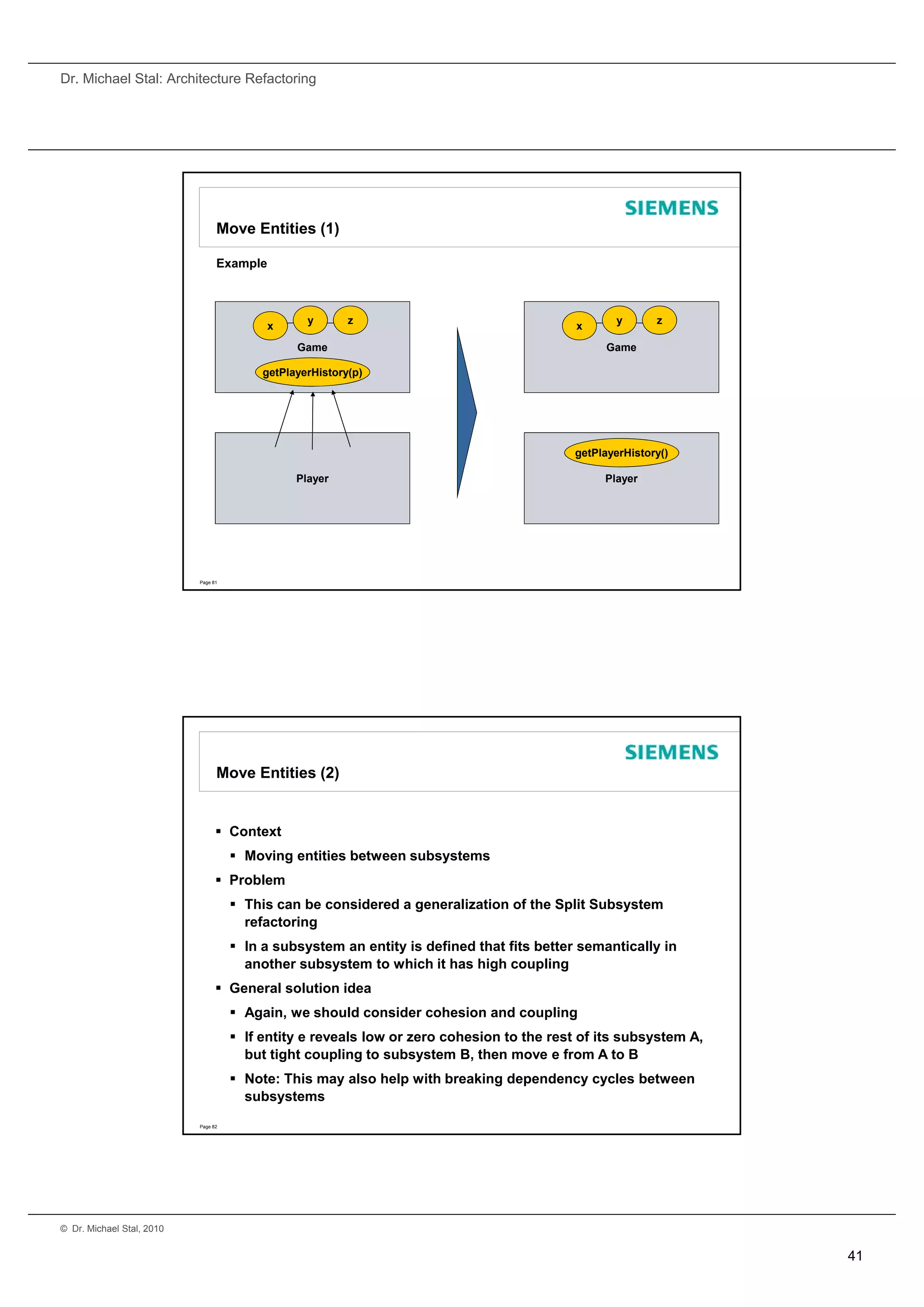
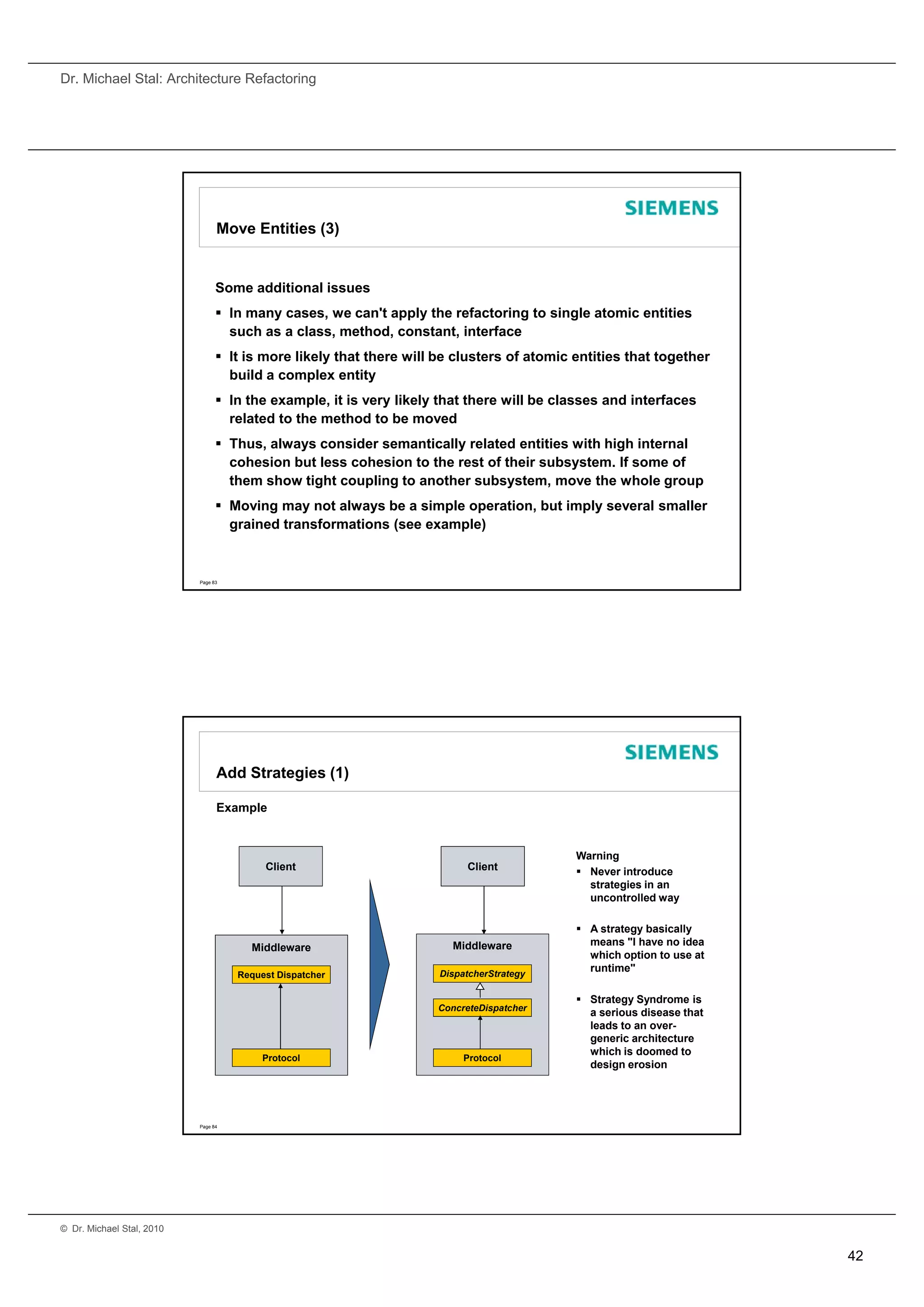
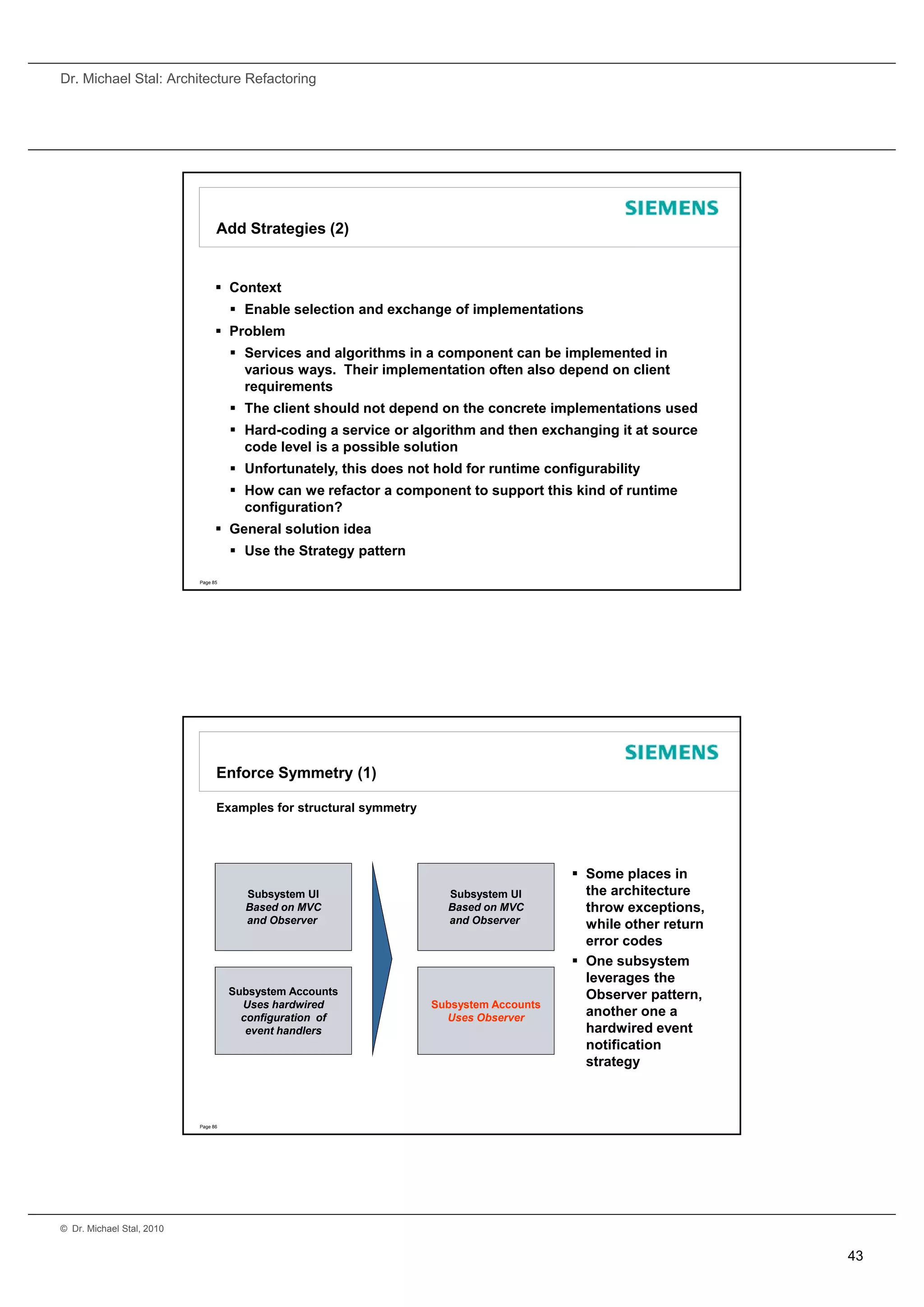
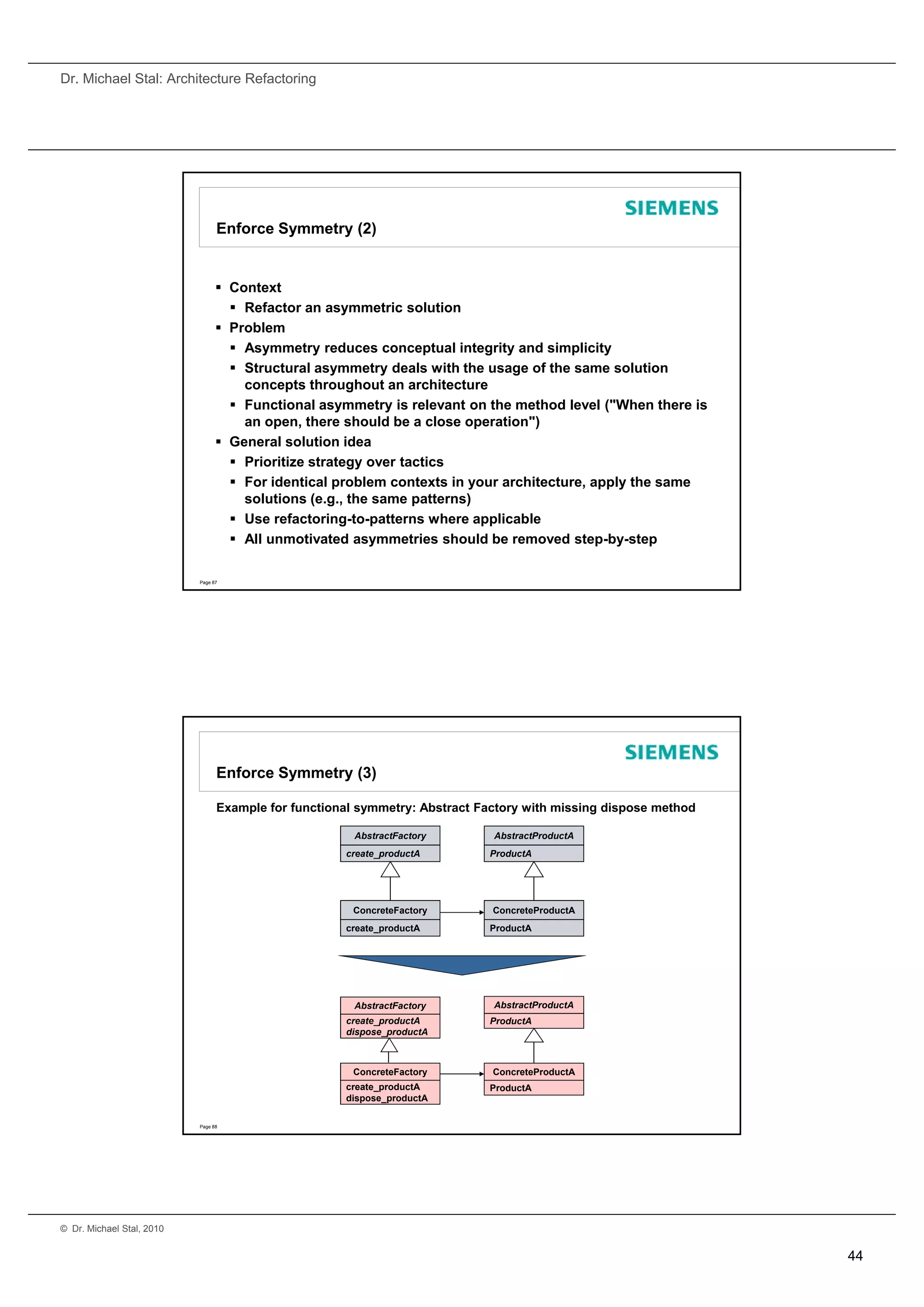
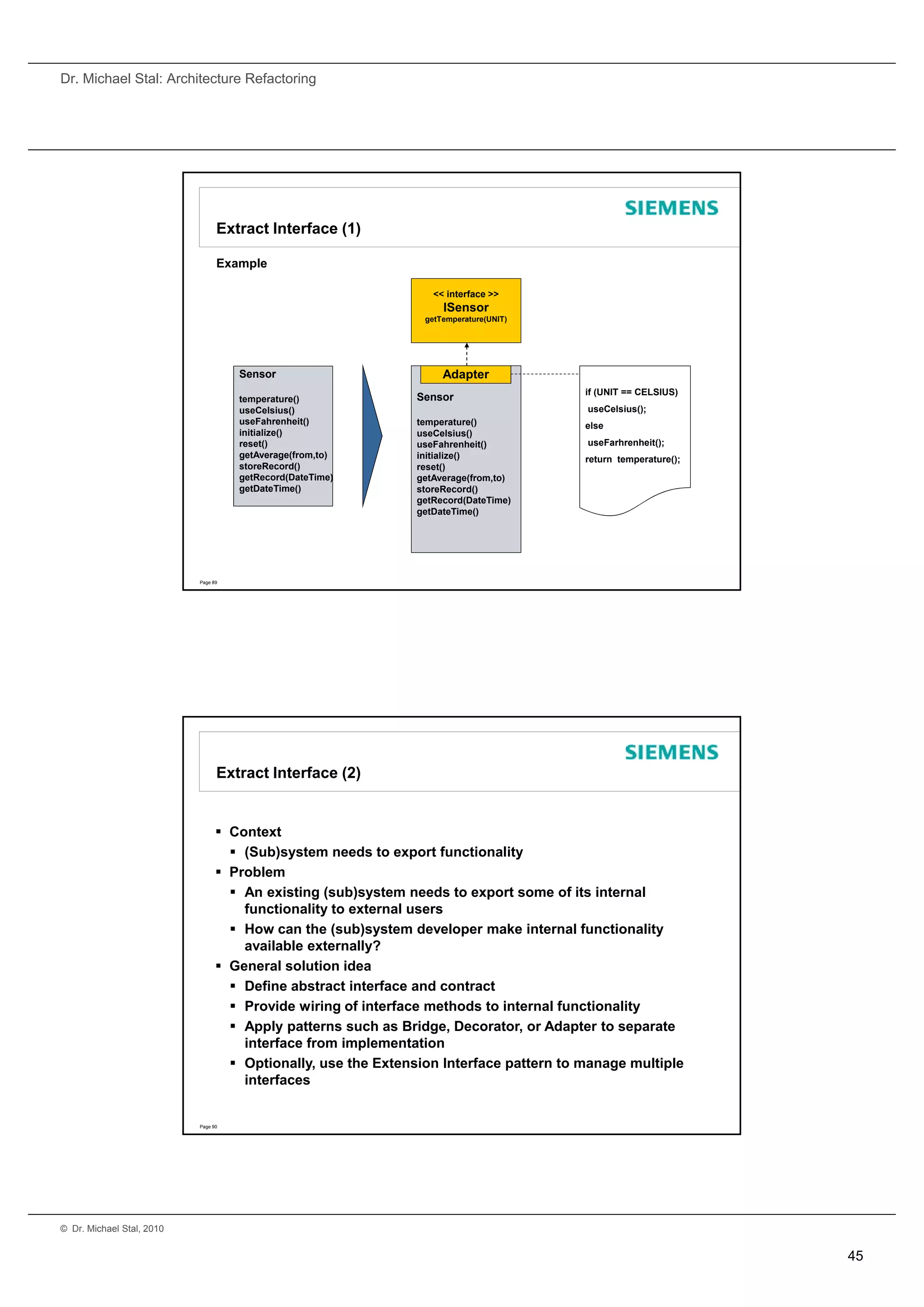
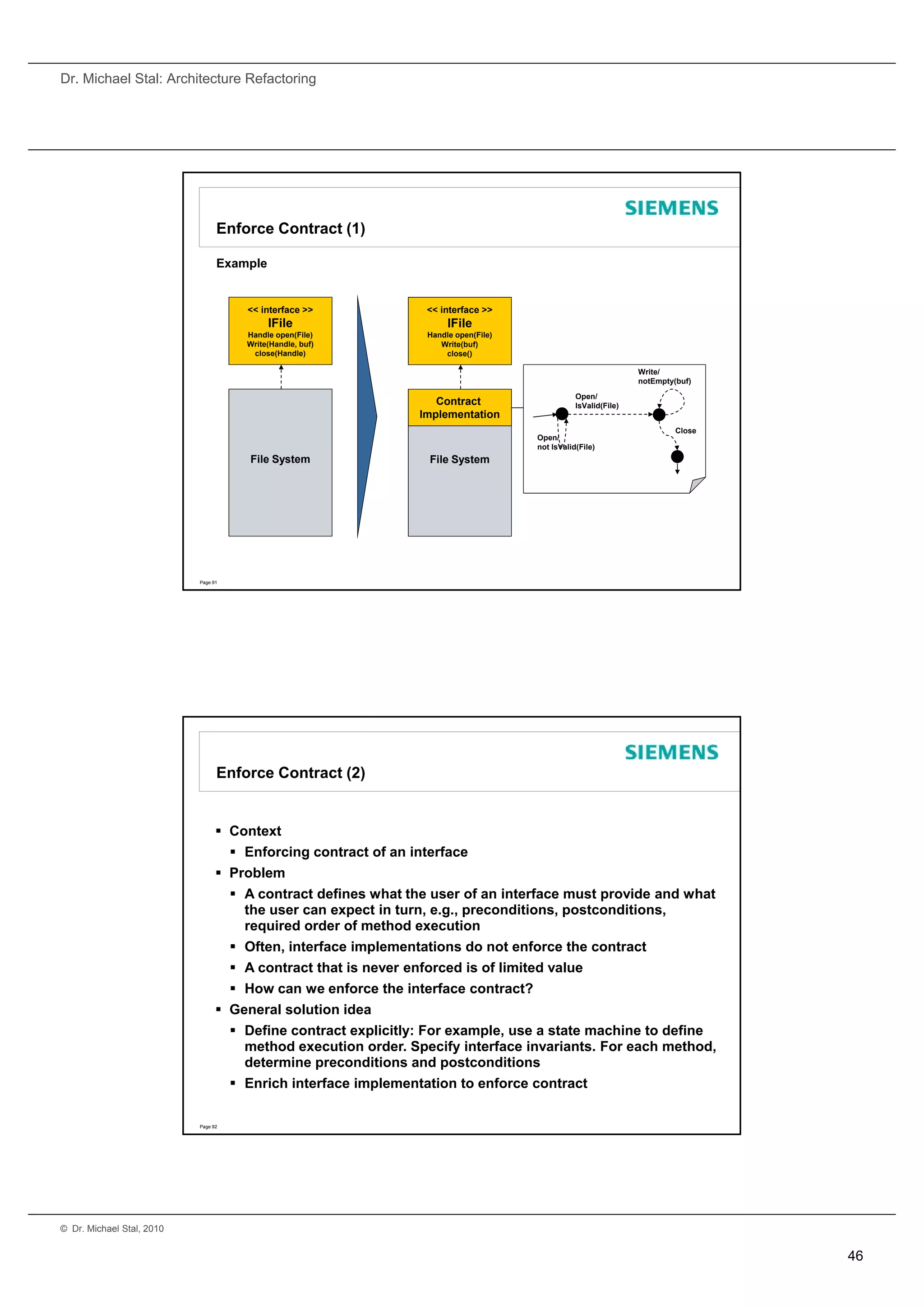
![Dr. Michael Stal: Architecture Refactoring
Provide Extension Interfaces (1)
Client
Factory
create()
Interface1 find()
service_1.1();
service_1.2();
service_1.3();
service_1.4(); RootInterface
. get_extension()
.
.
.
.
. Extension Extension
. Interface1 Interface2
service_1.n(); service_1() service_2()
Component Component
svc_1_impl()
svc_2_impl()
Page 93
Provide Extension Interfaces (2)
Context
Managing interfaces of a component
Problem
If a component evolves over time, often new functionality is added to
the component's interfaces
This may lead to severe interface bloating, which has a negative impact
on quality attributes such as usability and manageability (Swiss Army
Knife anti-pattern)
Unsystematic interface evolution may also break client code
How can we add an interface management for systematically evolving
and providing interfaces?
General solution idea
Apply Extension Interface Patterns [POSA2]
Introduce a common protocol for all provided interfaces (including
interface navigation)
Integrate additional functionality so that clients can discover existing
component interfaces and navigate between them
Page 94
© Dr. Michael Stal, 2010
47](https://image.slidesharecdn.com/accu2010archrefactoring-100429173655-phpapp01/75/Accu2010-archrefactoring-47-2048.jpg)
